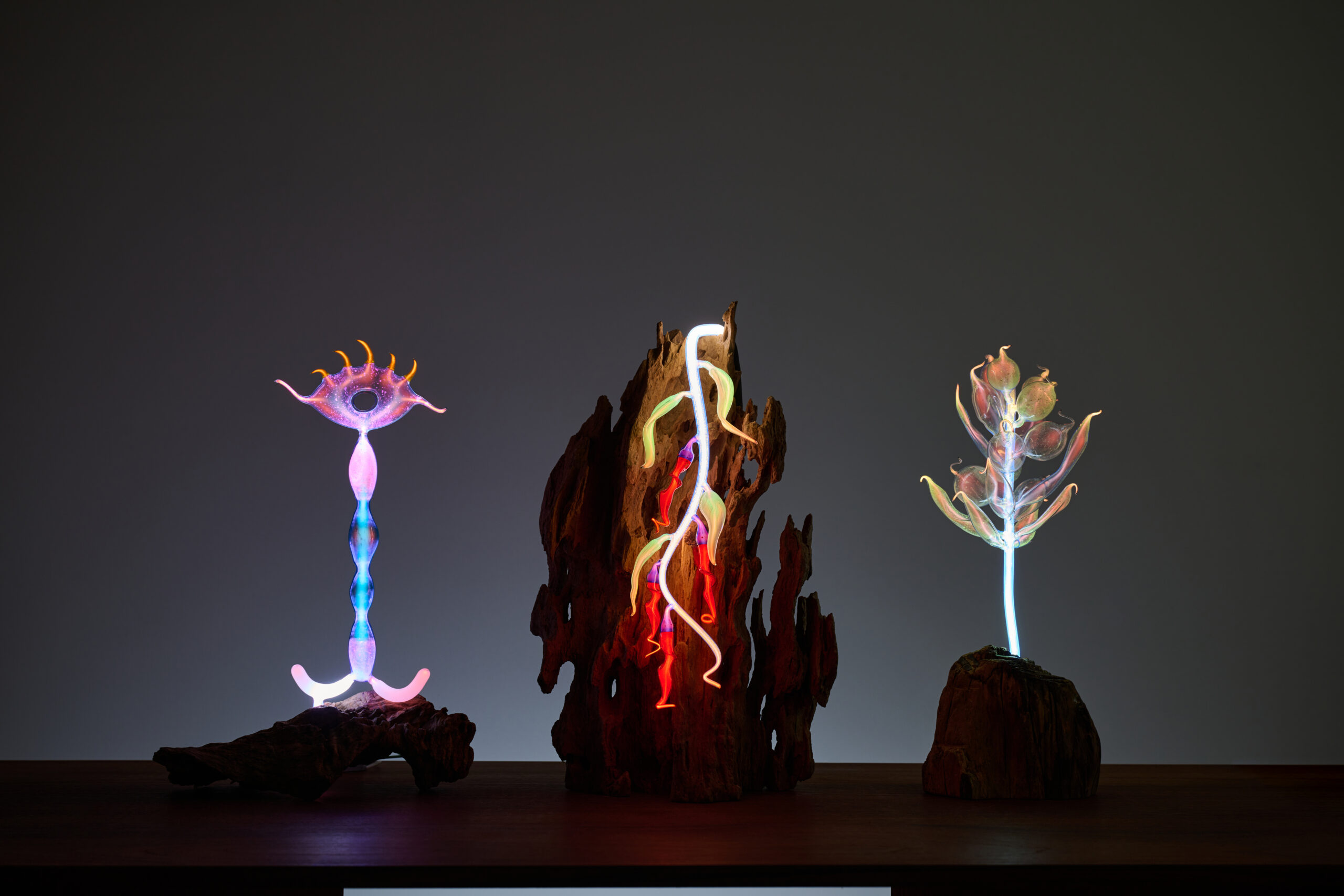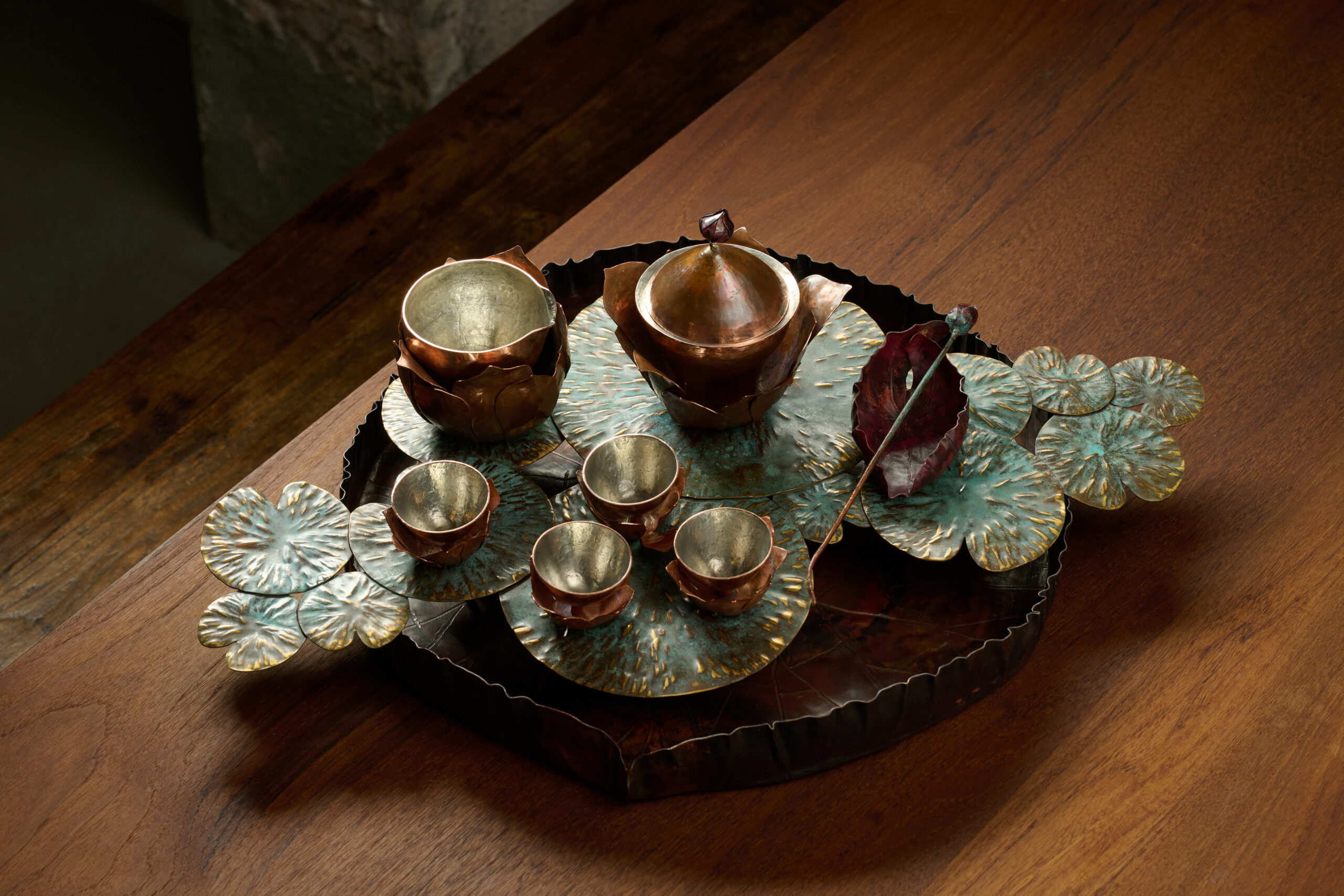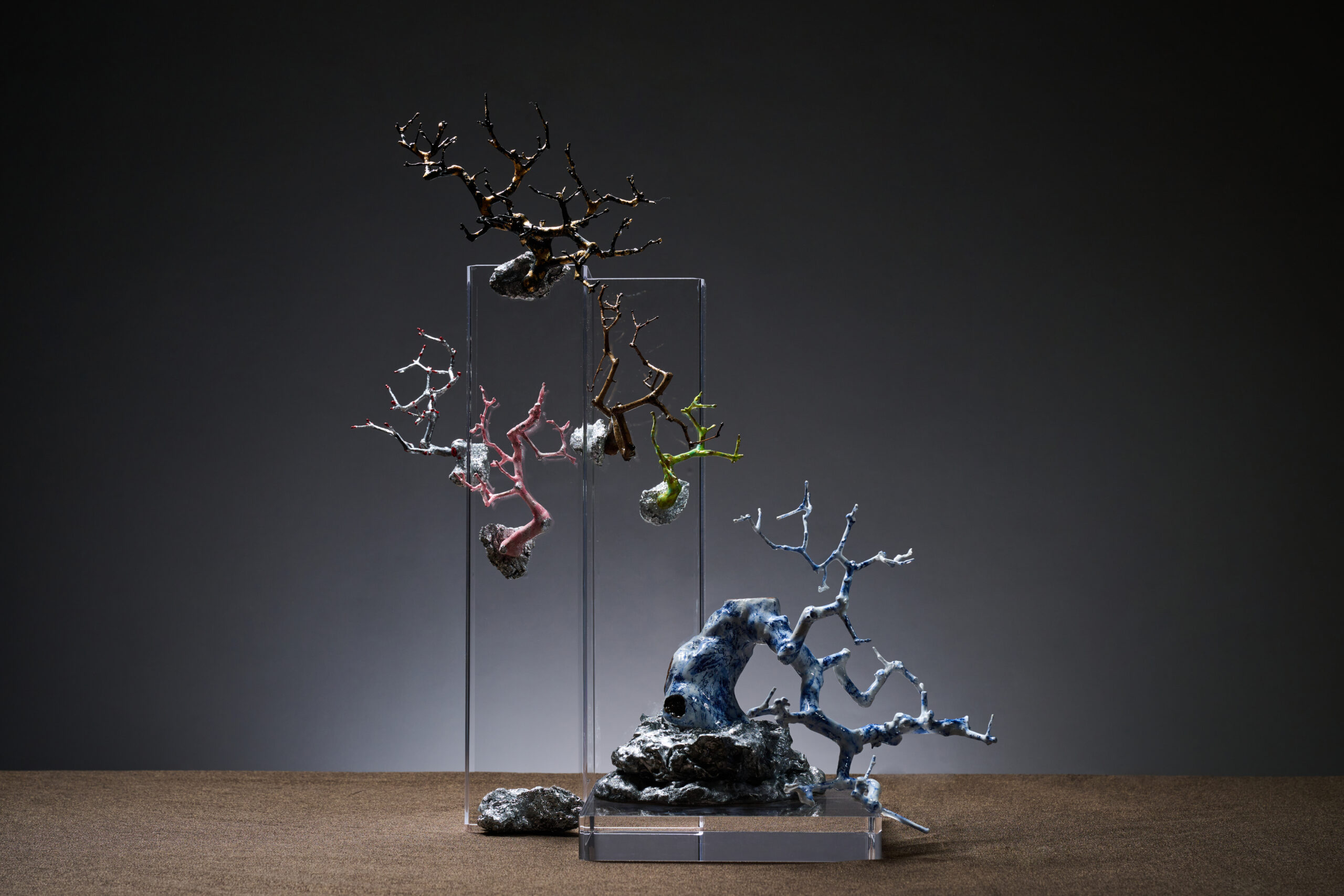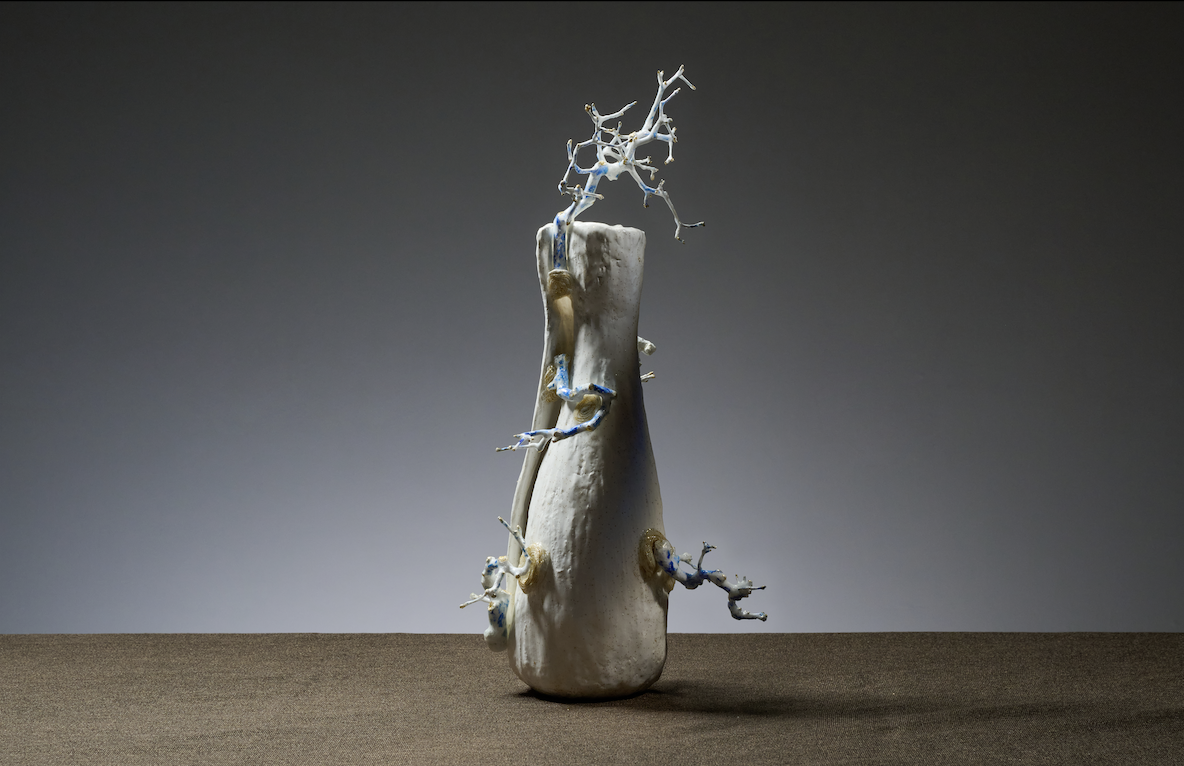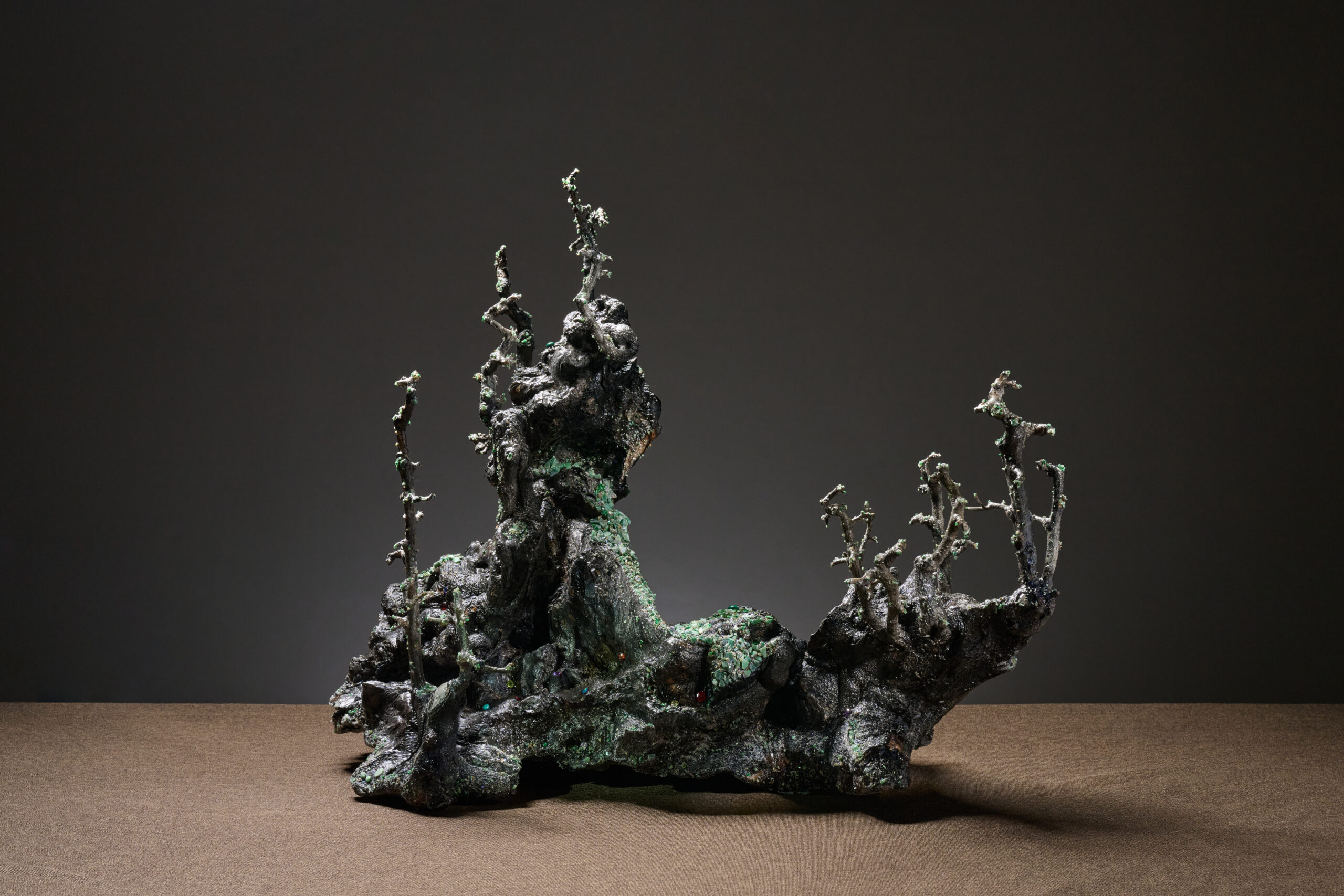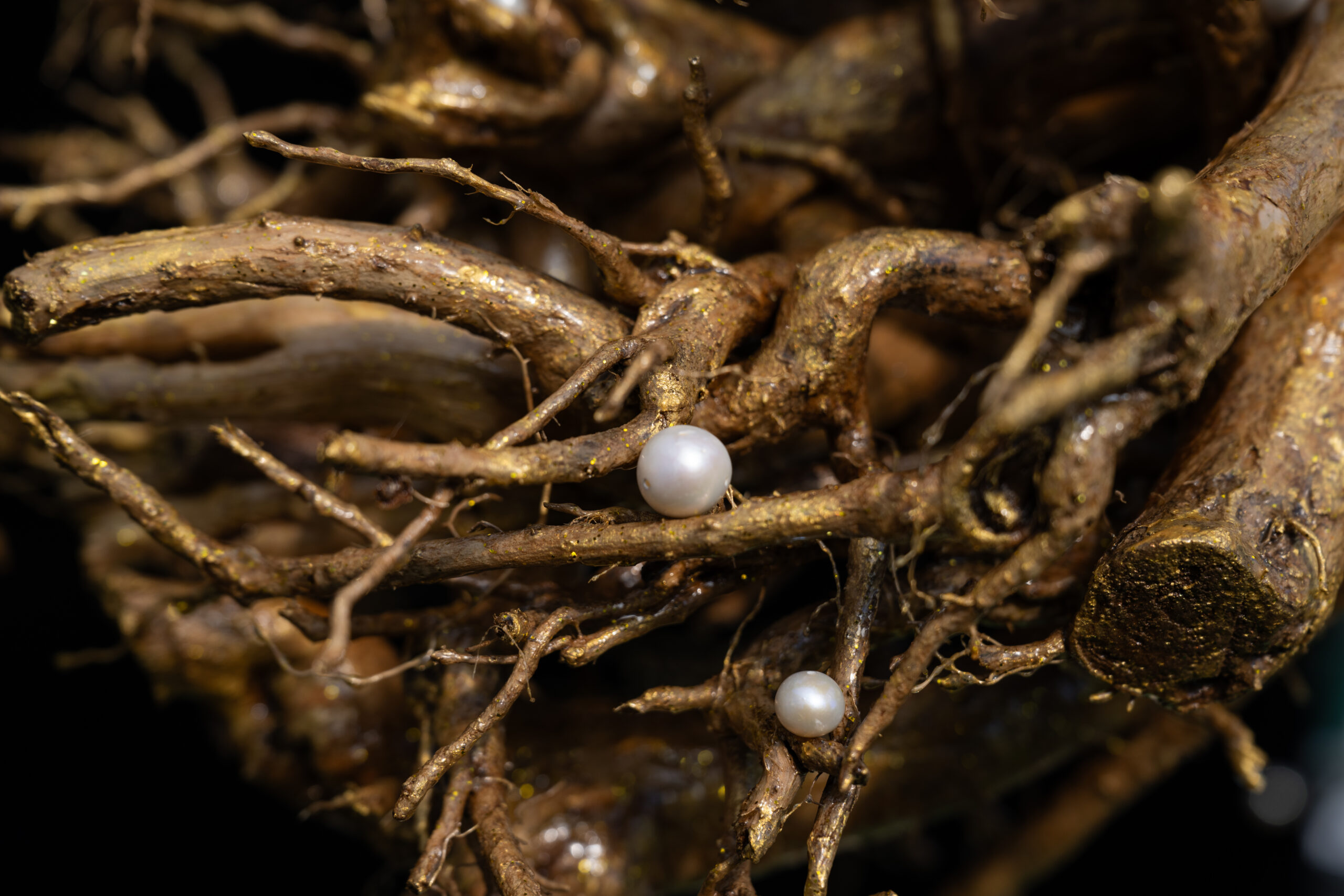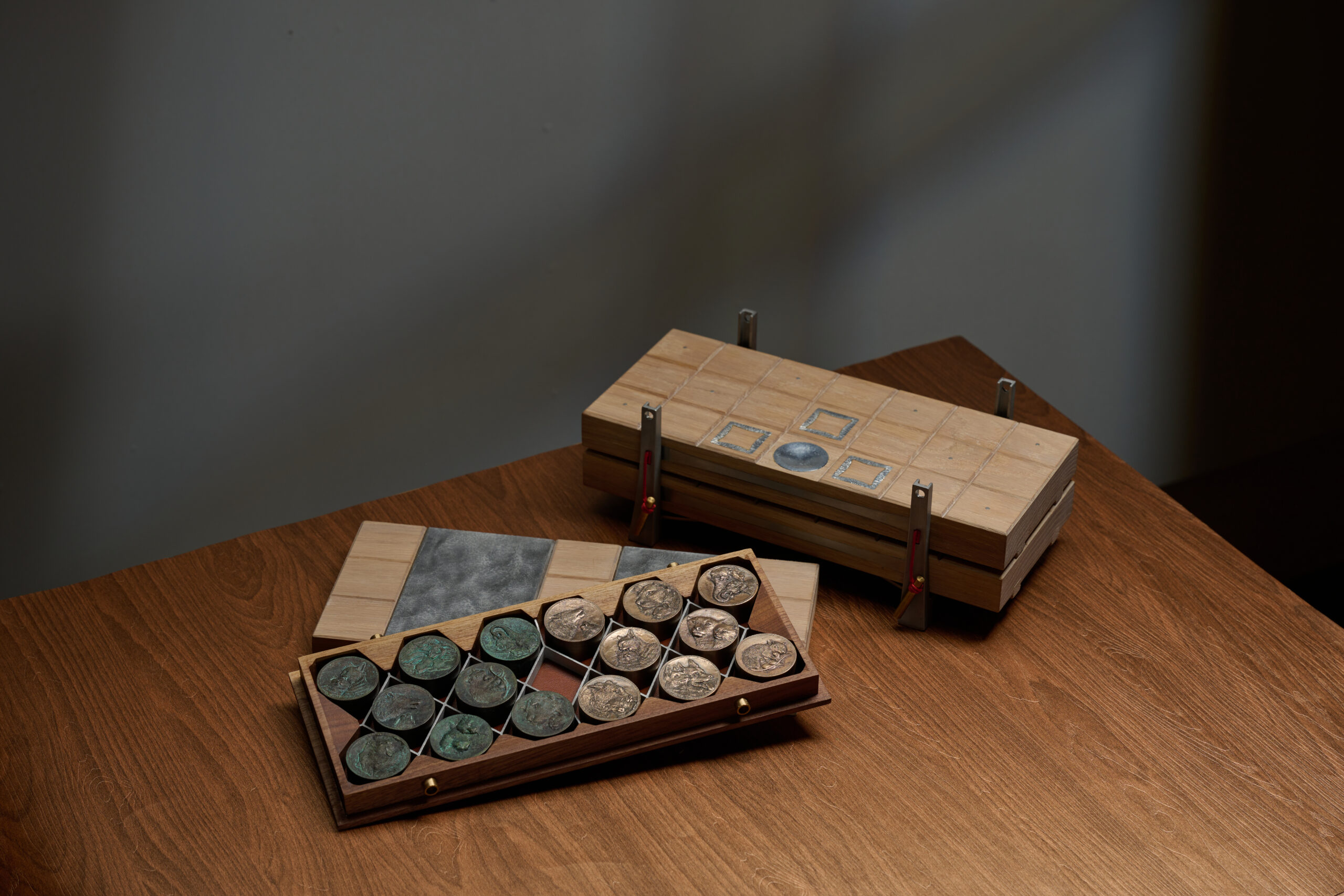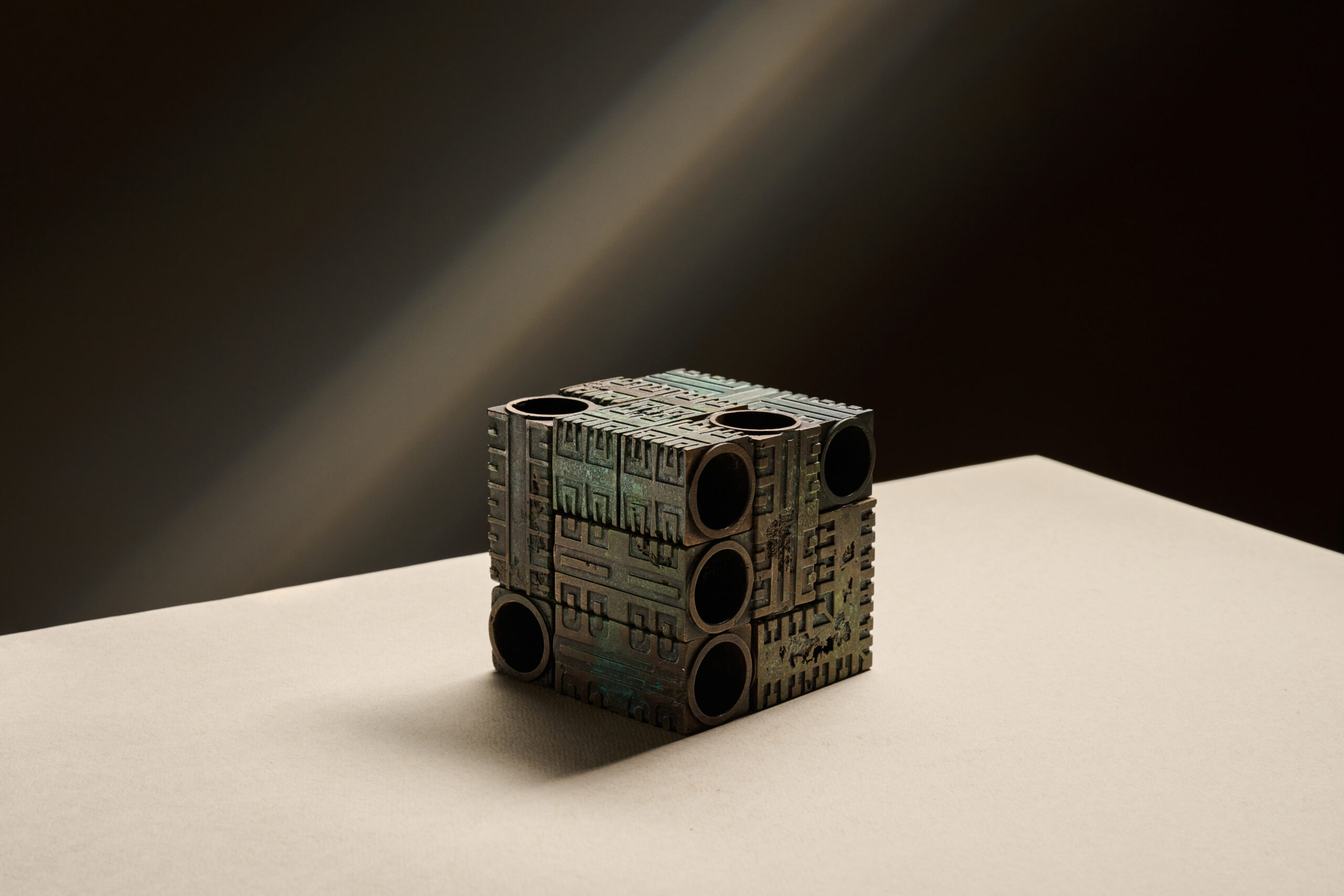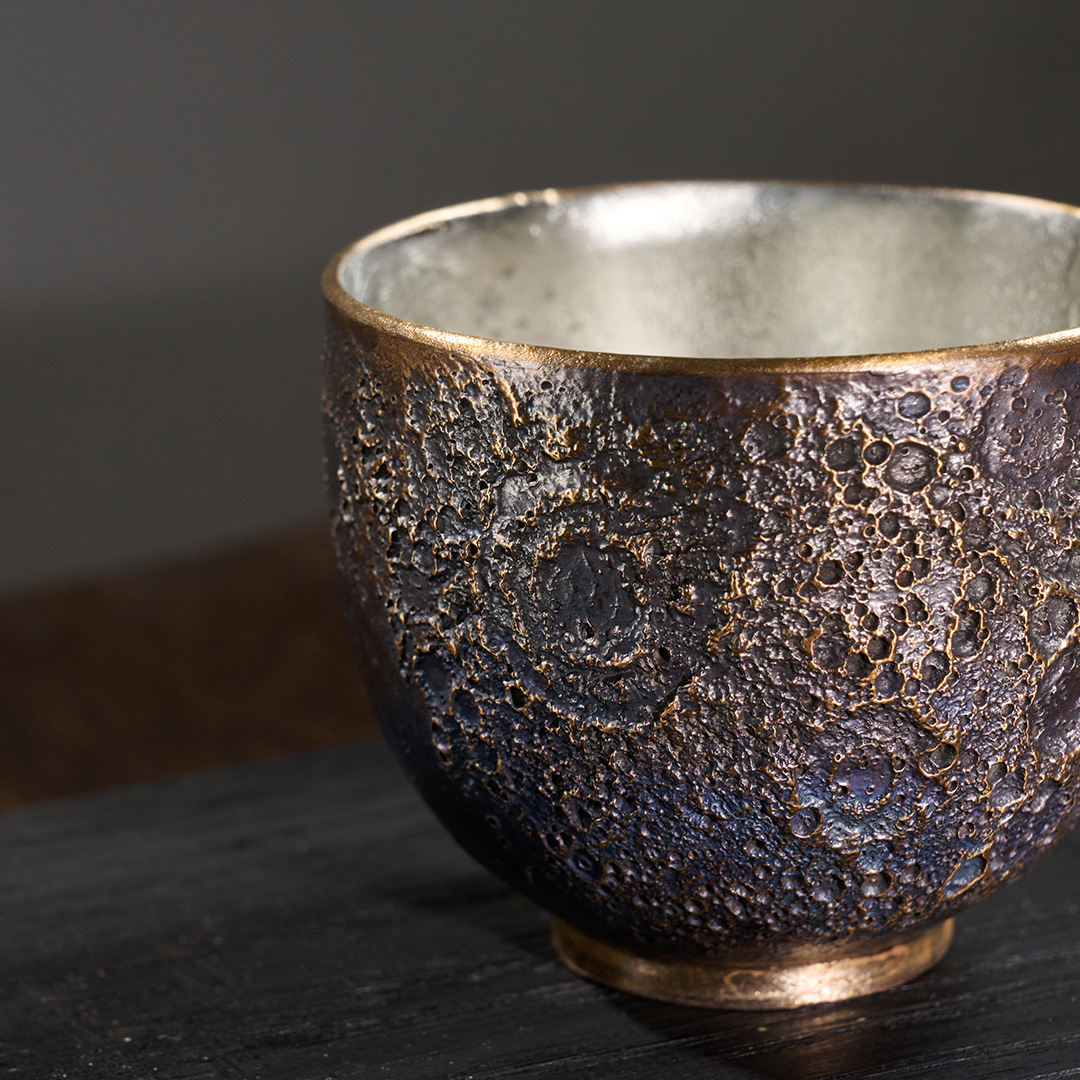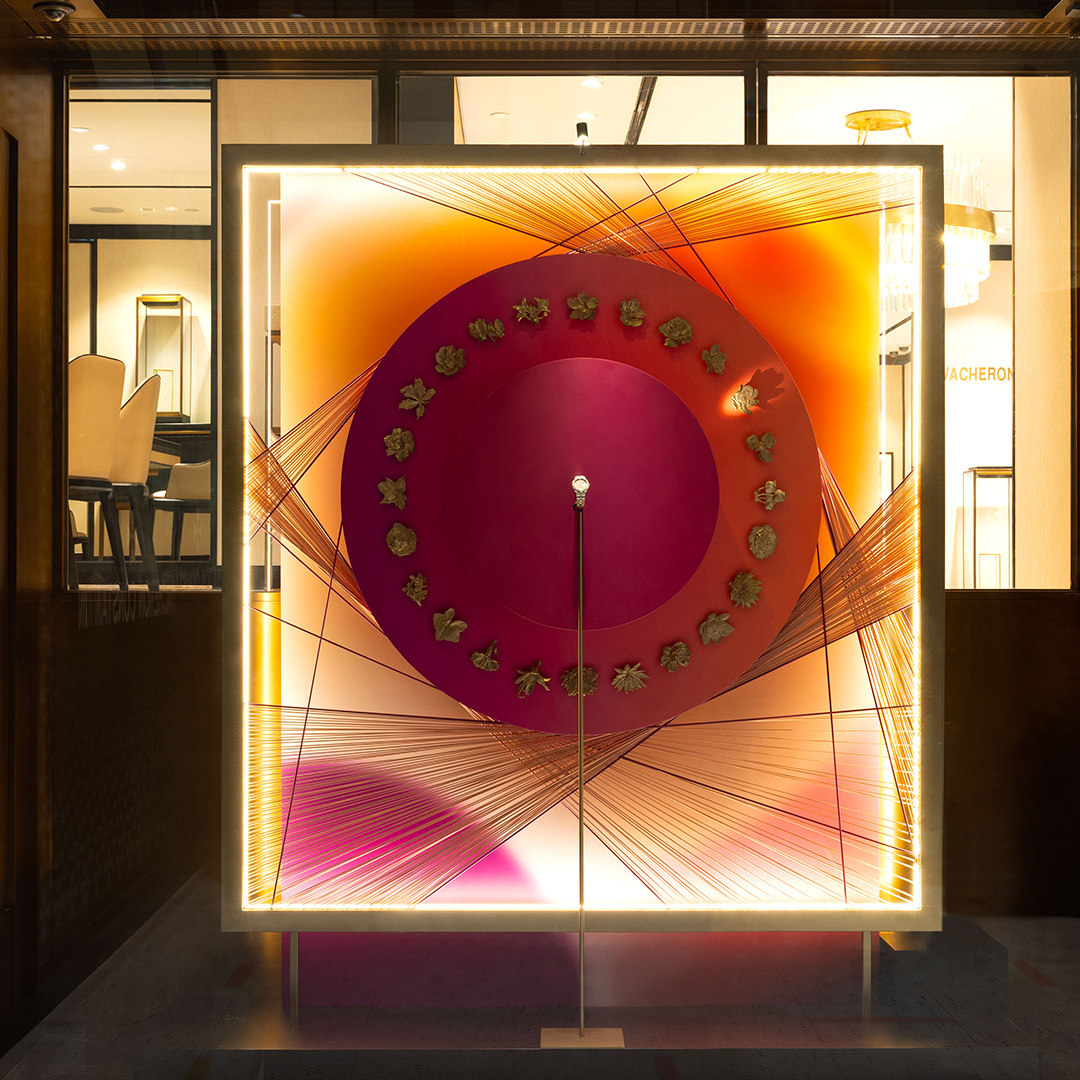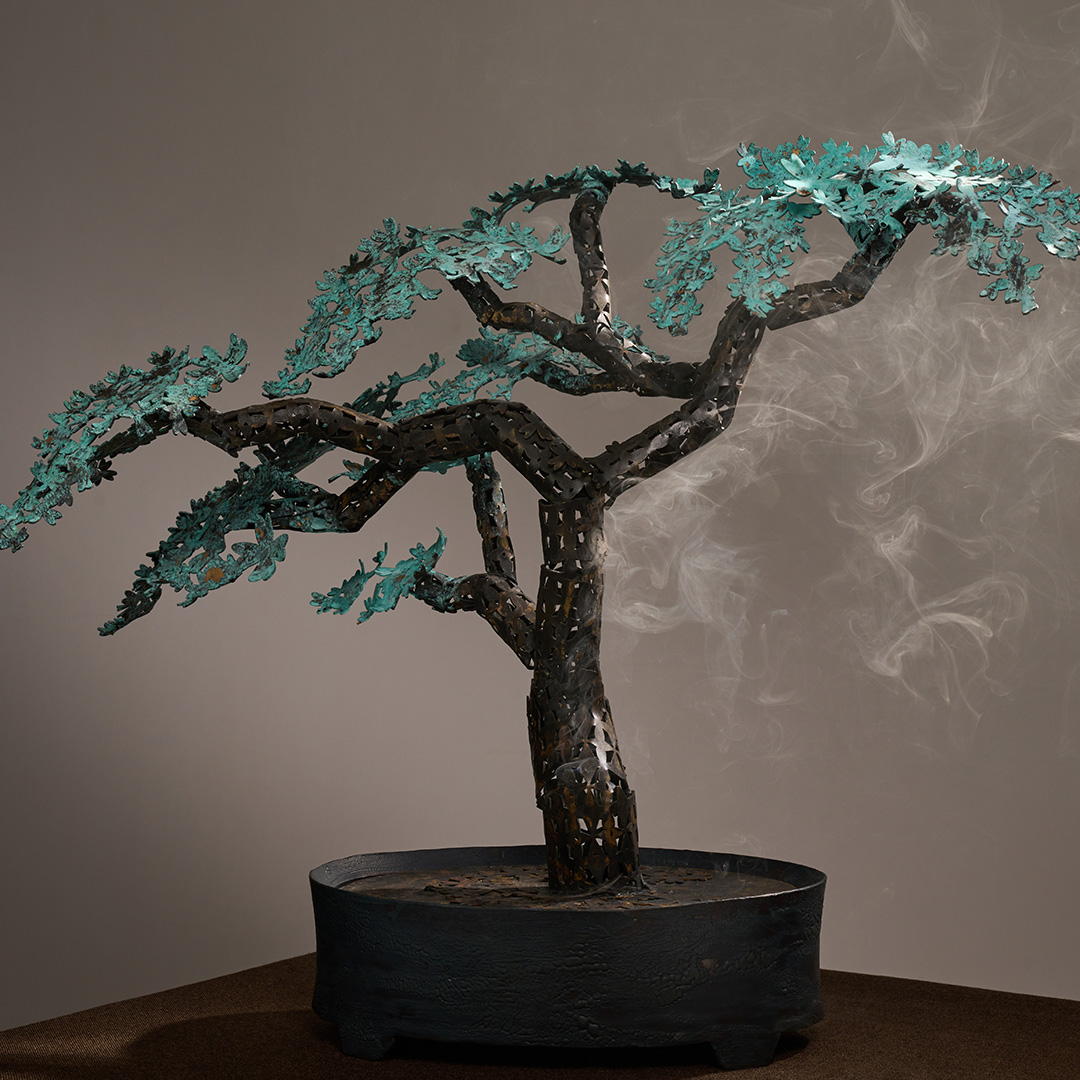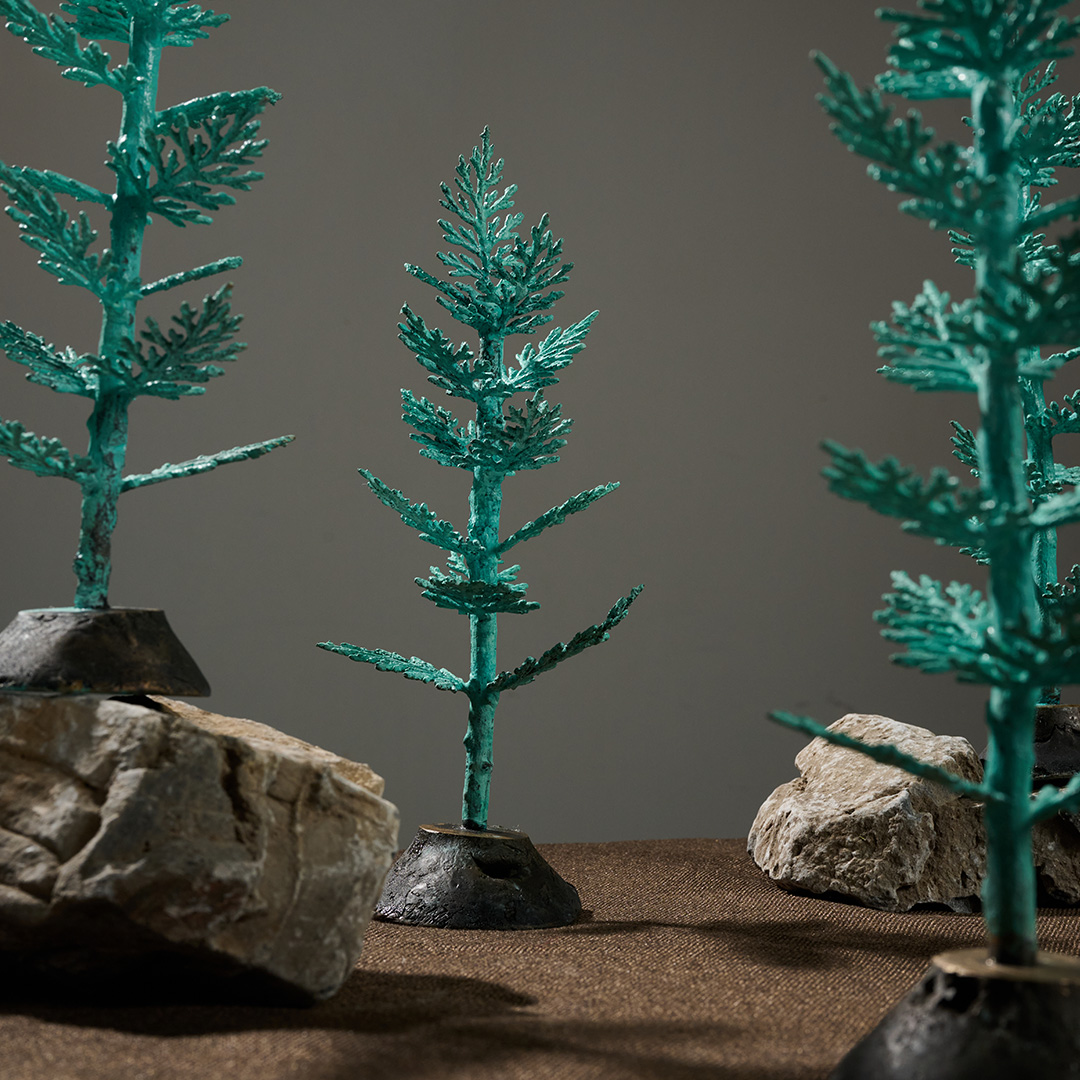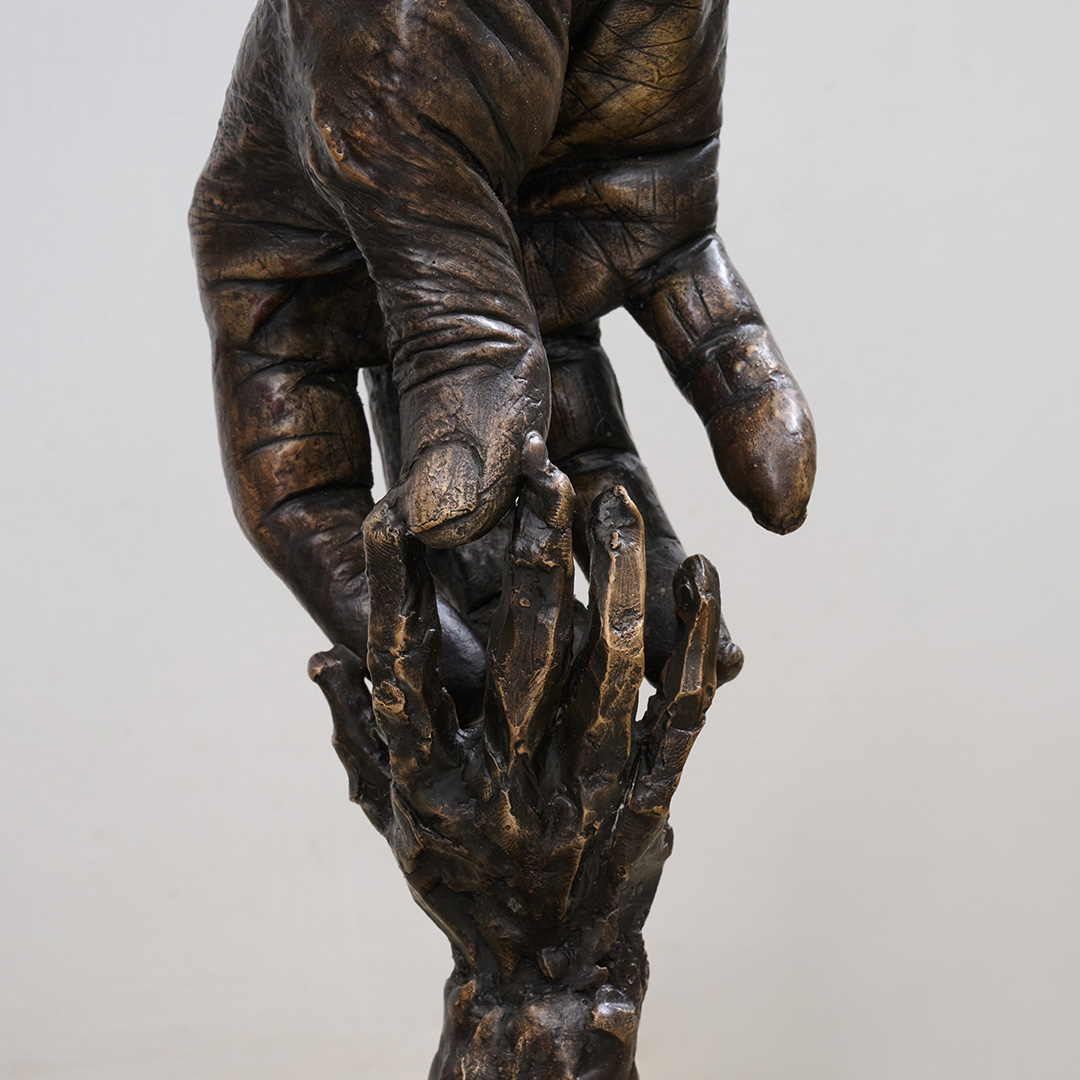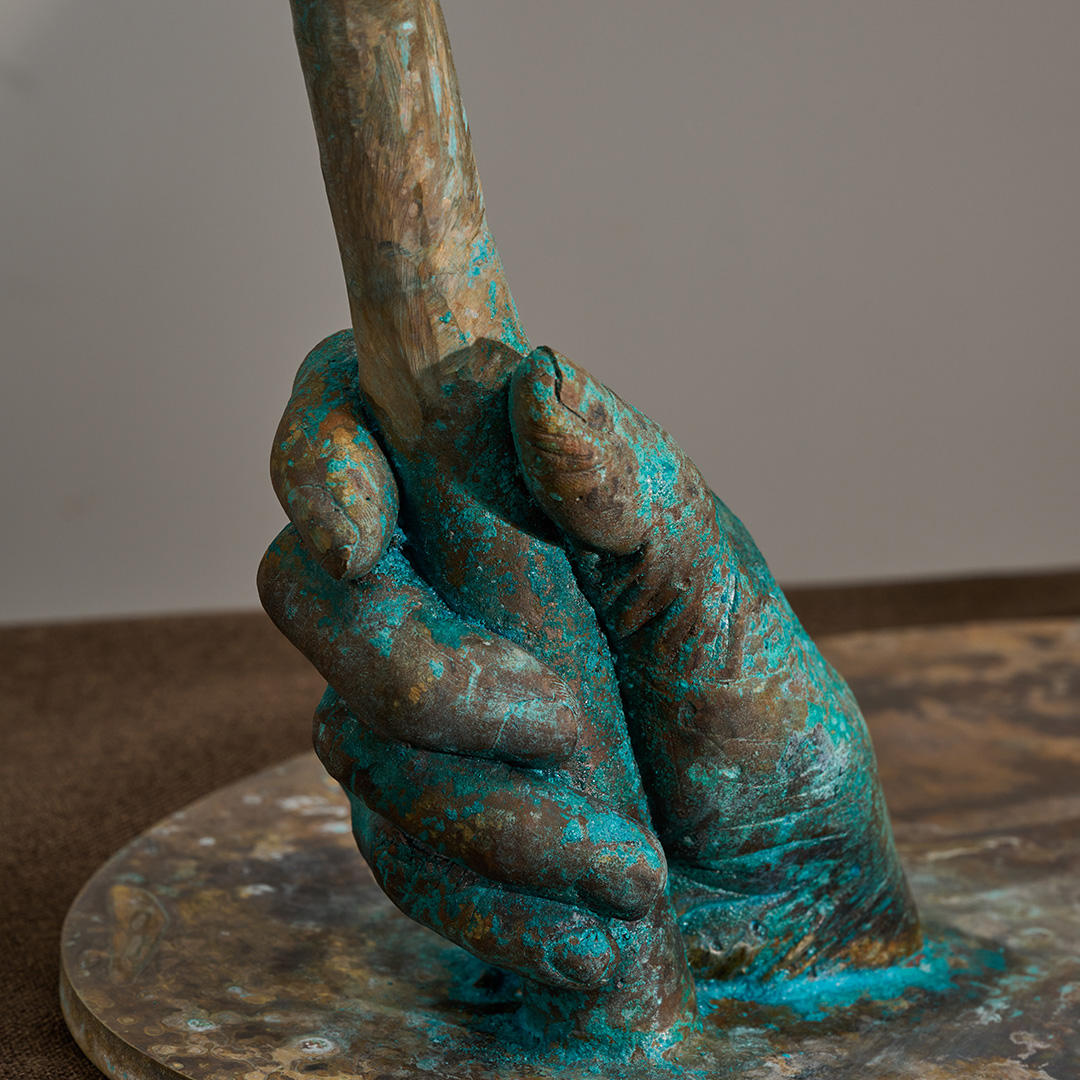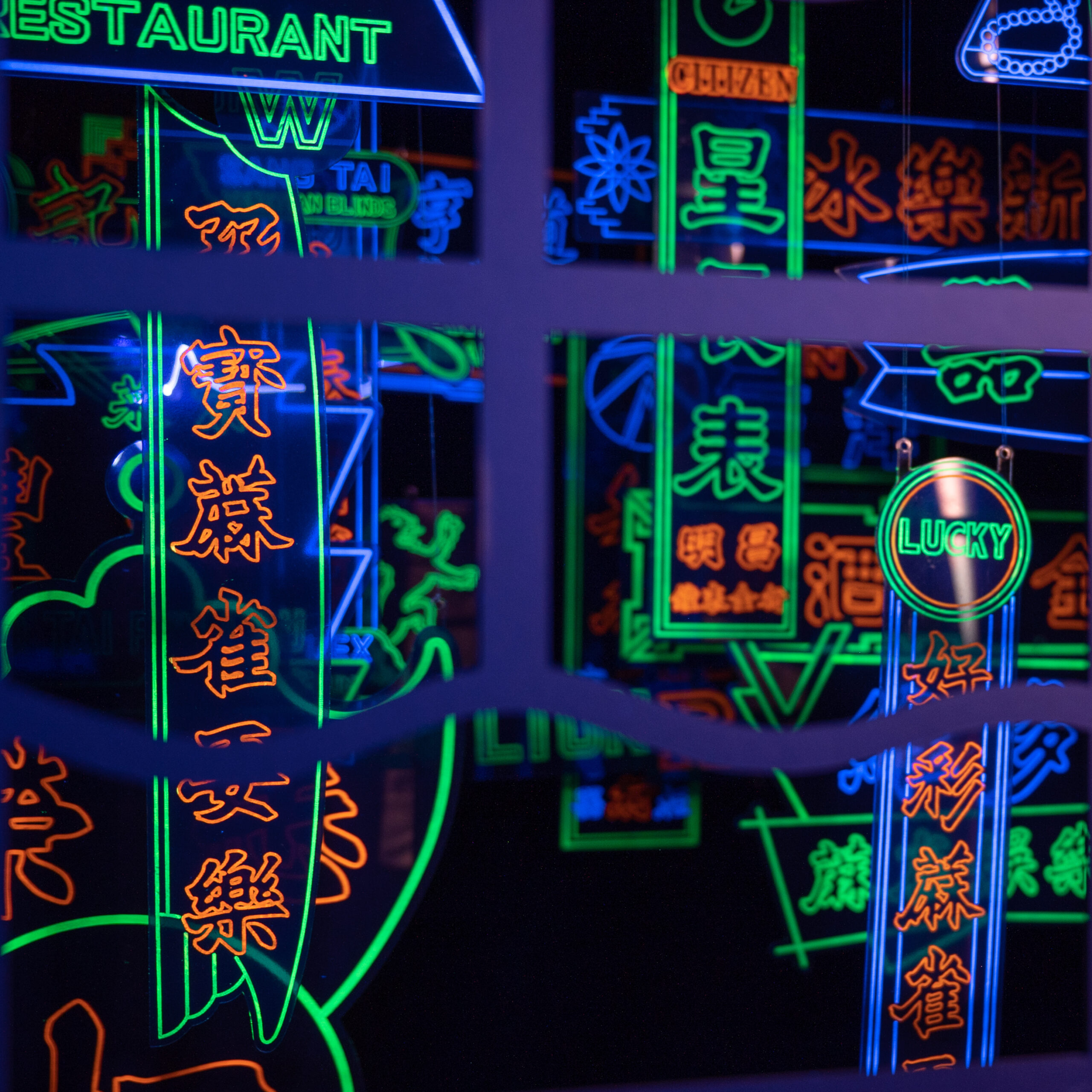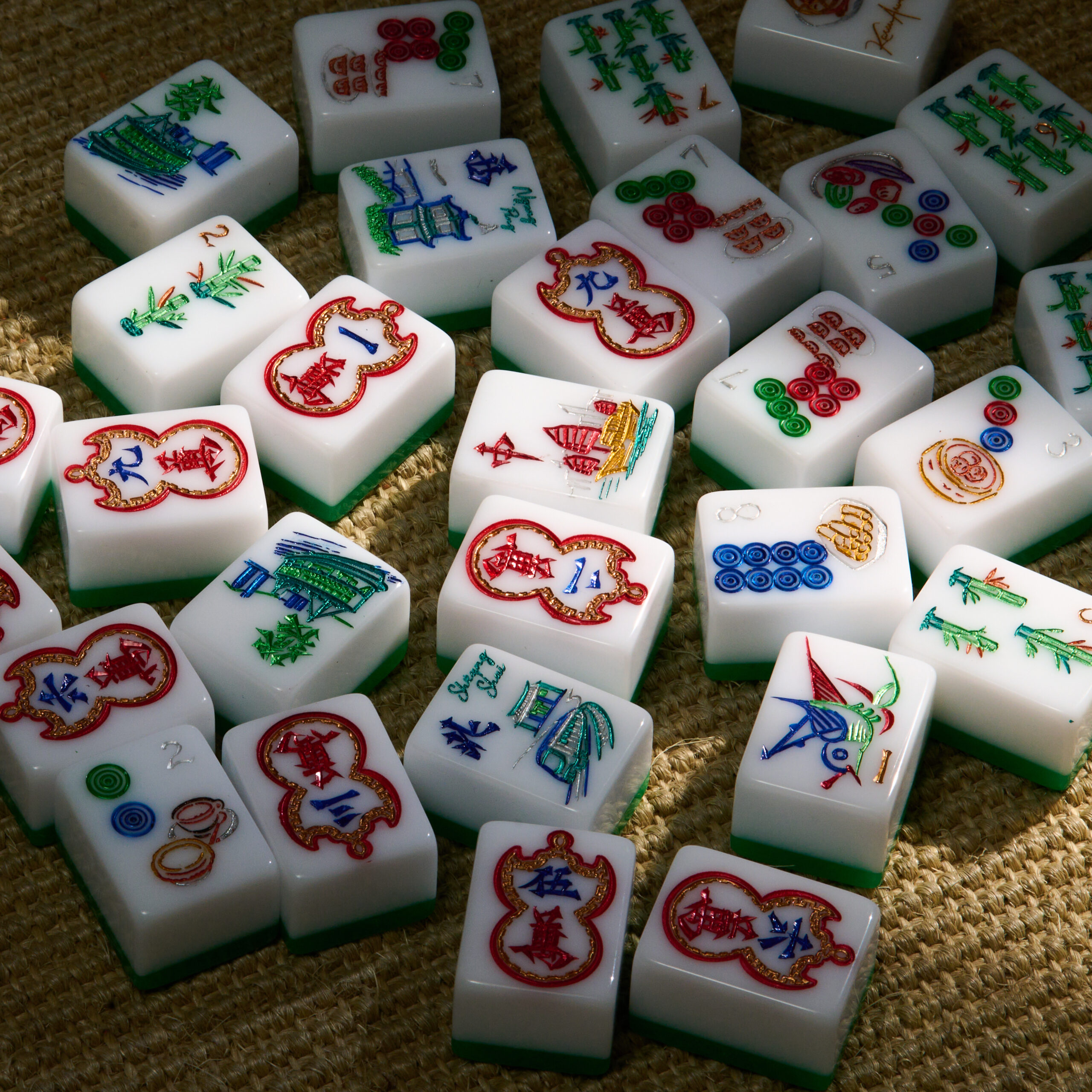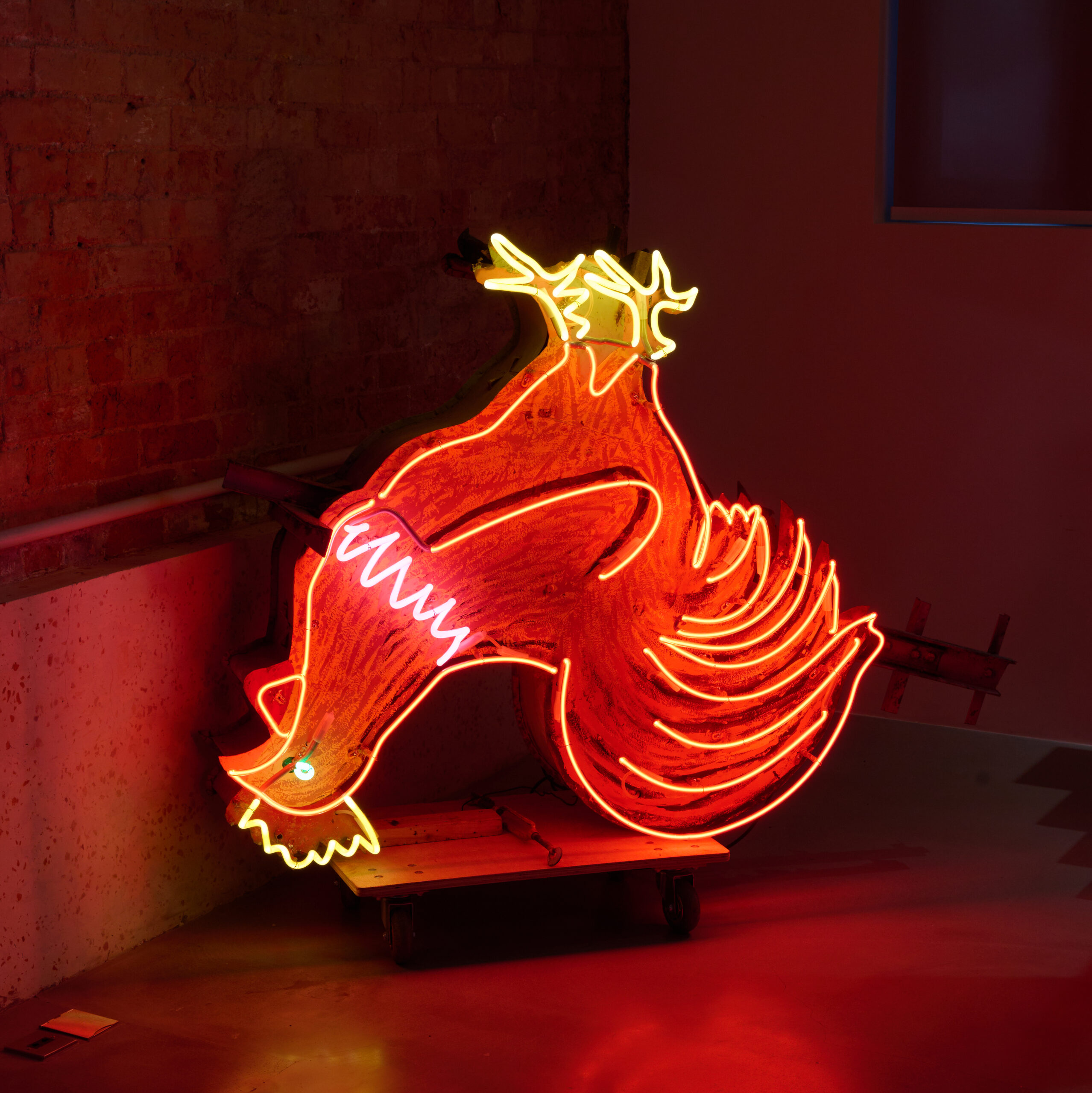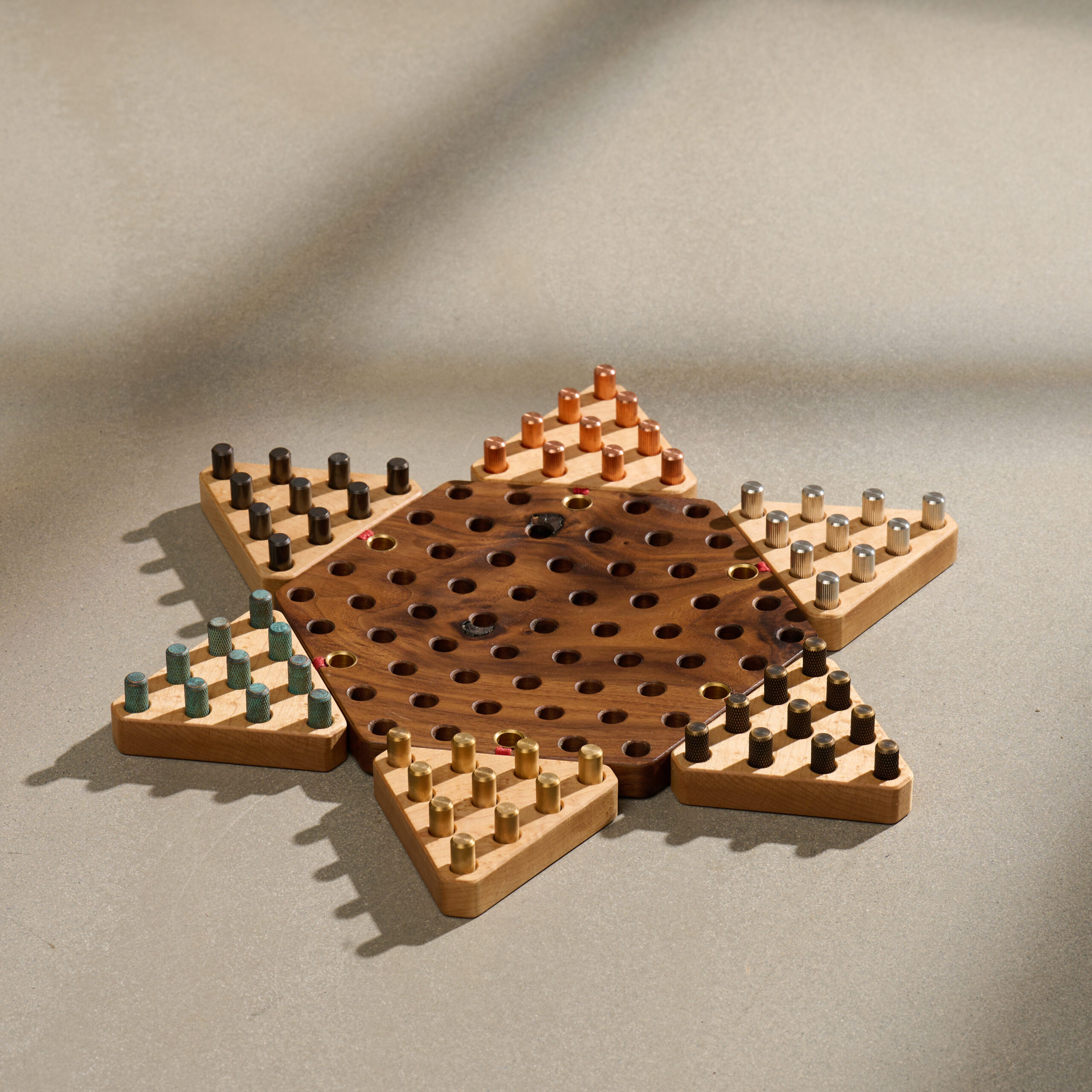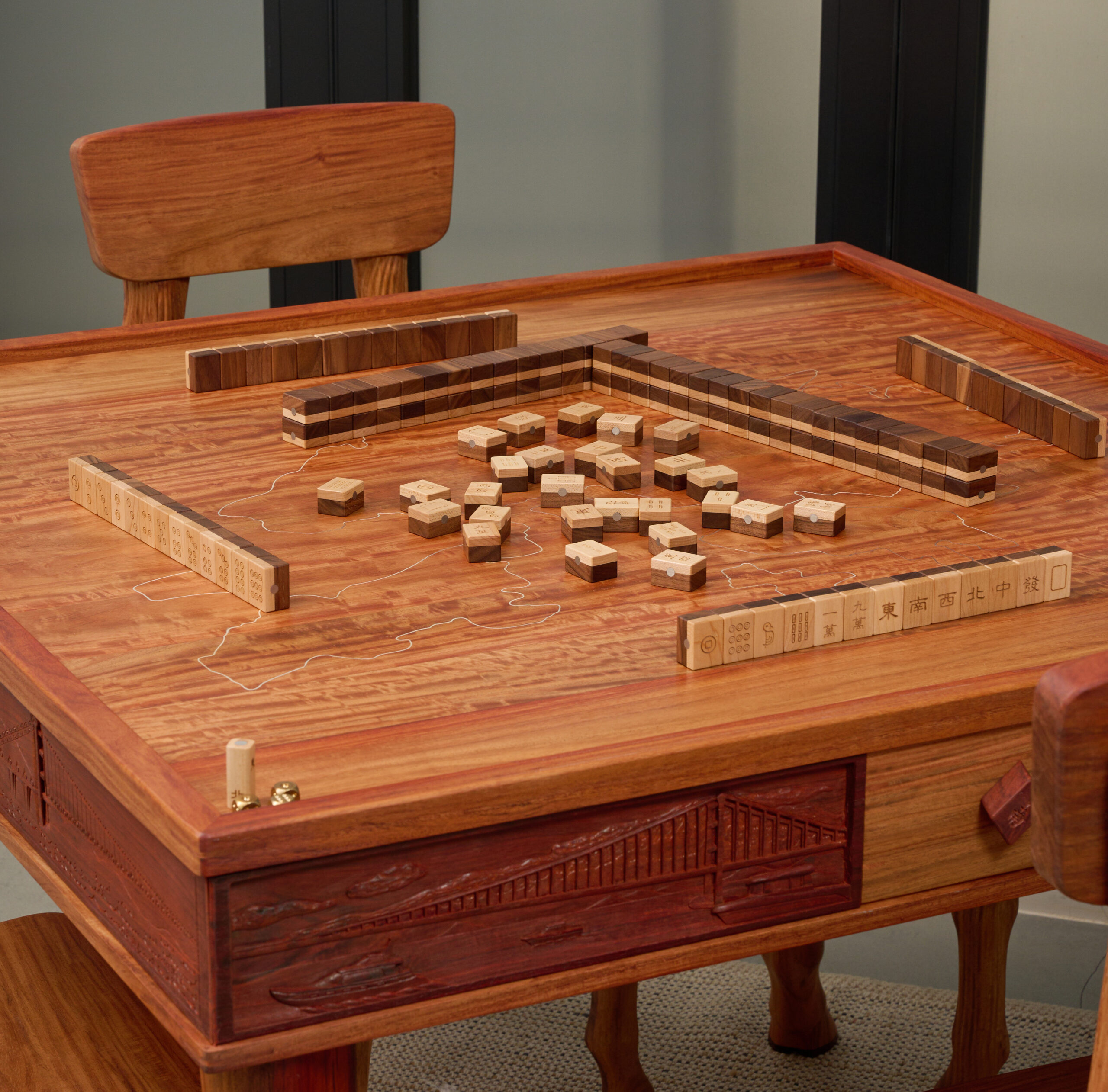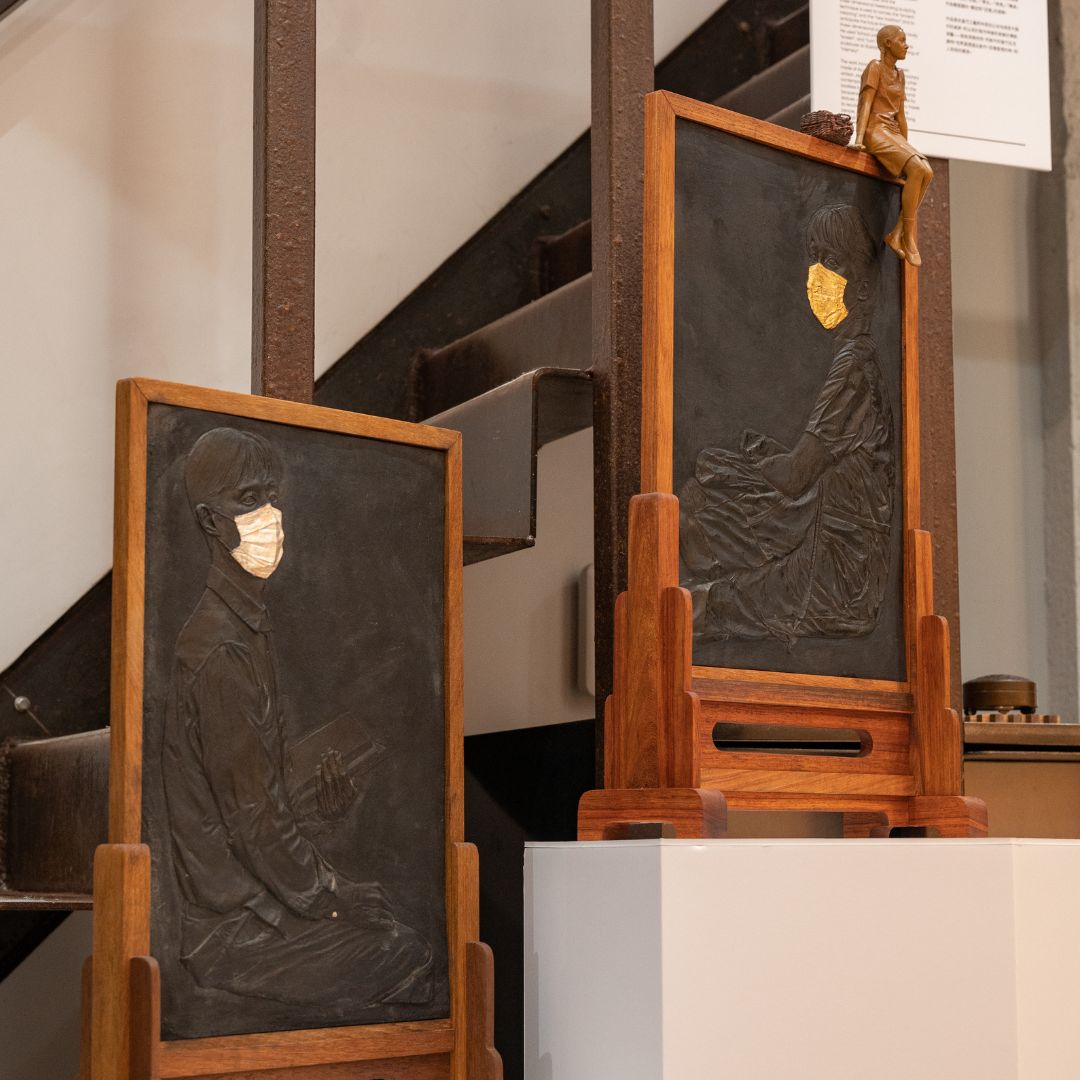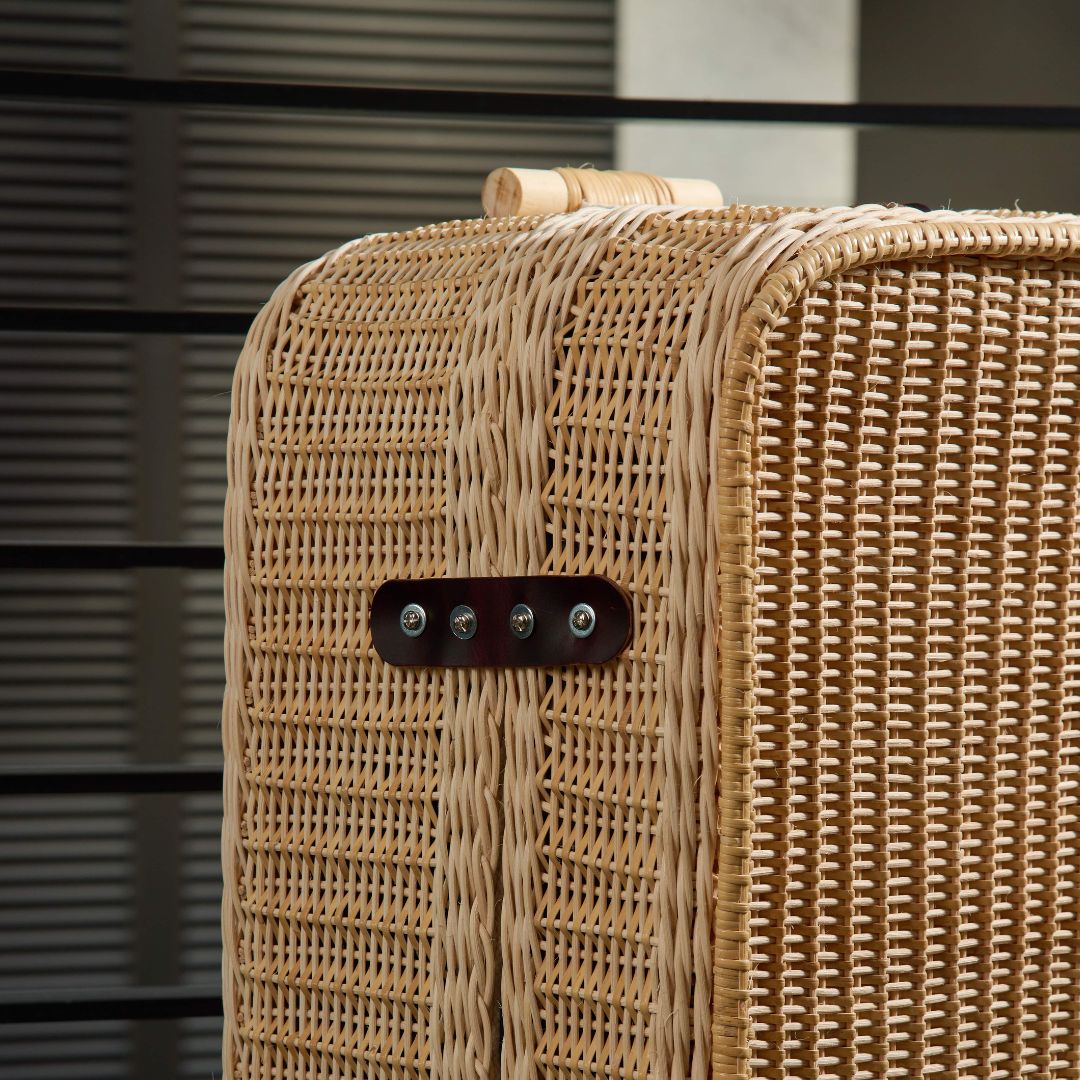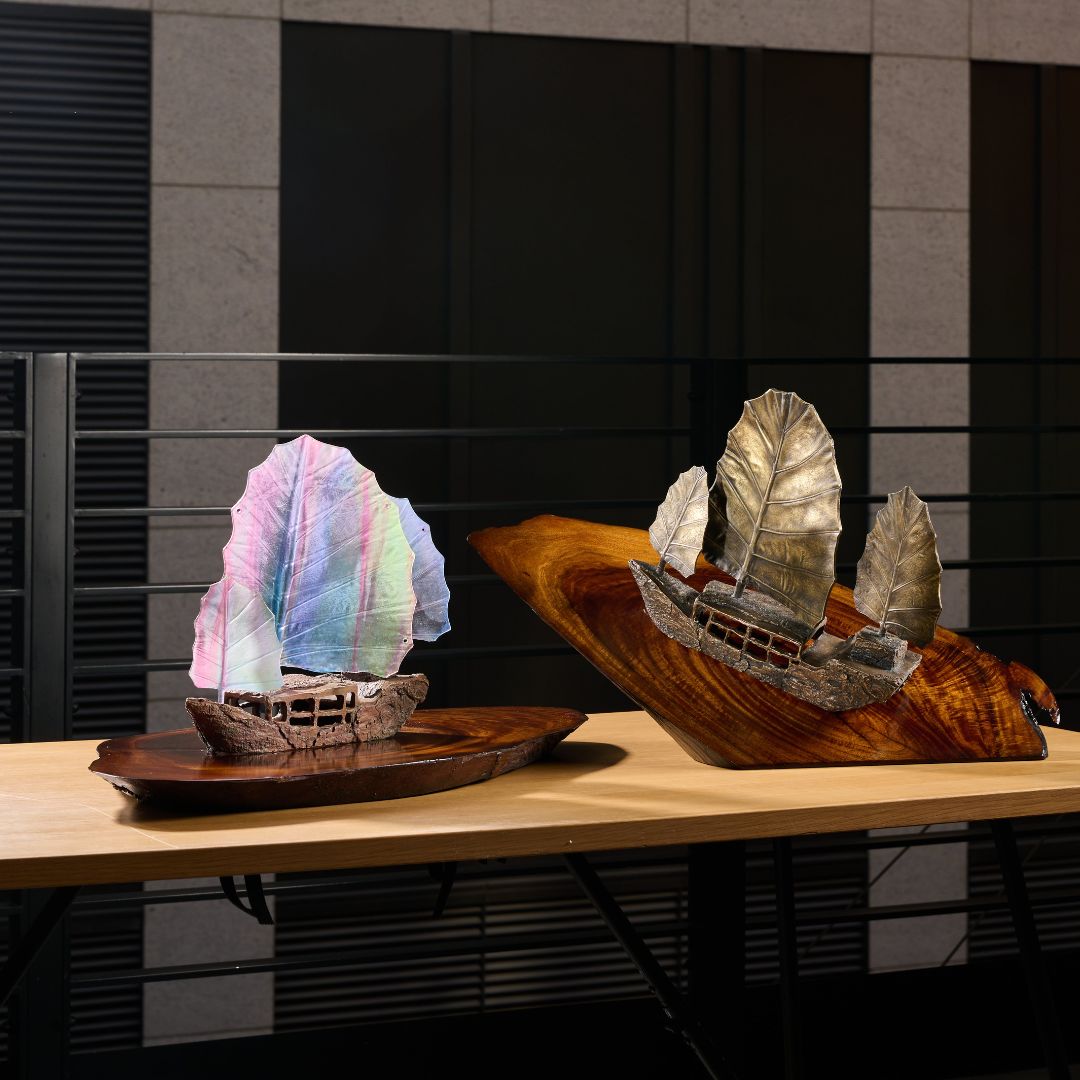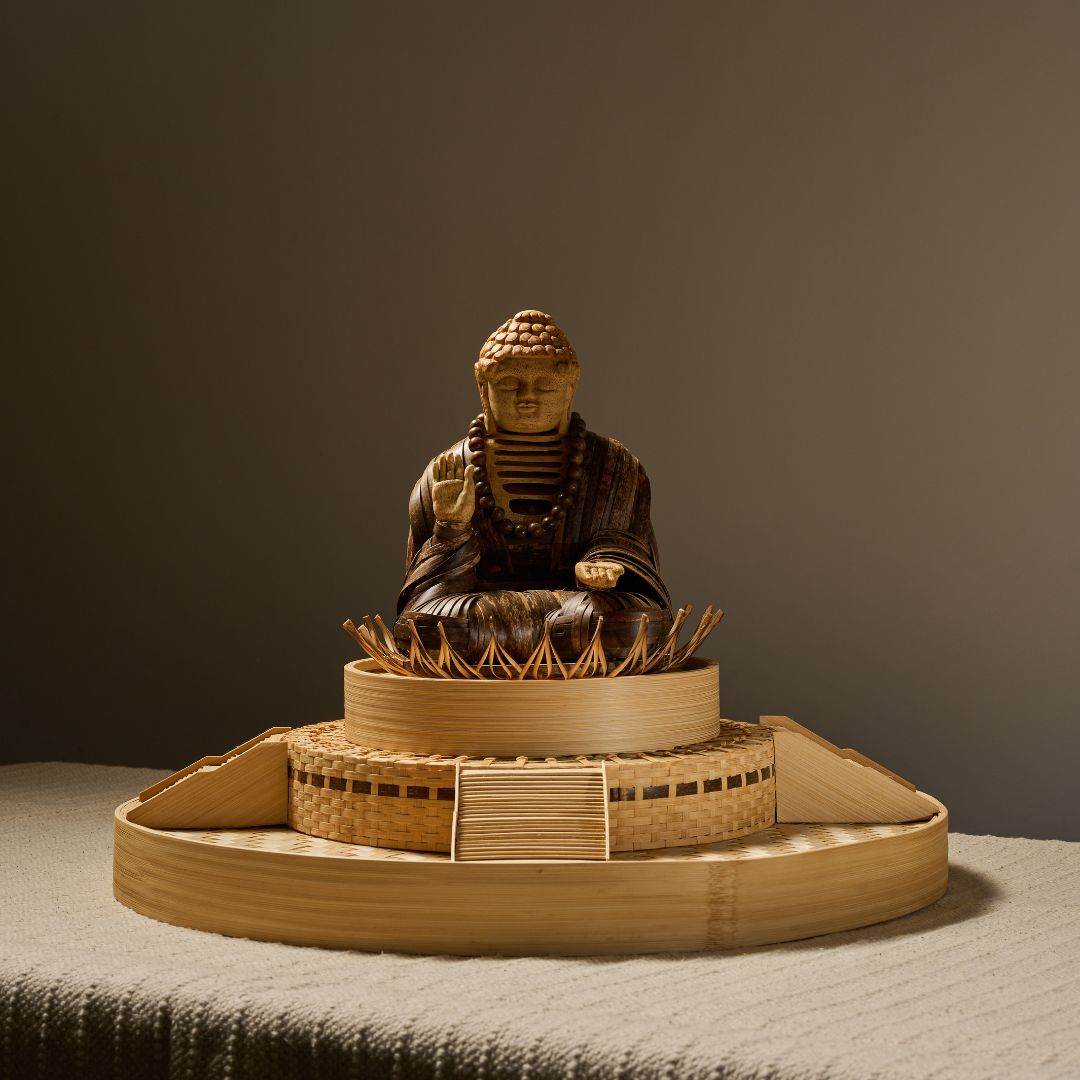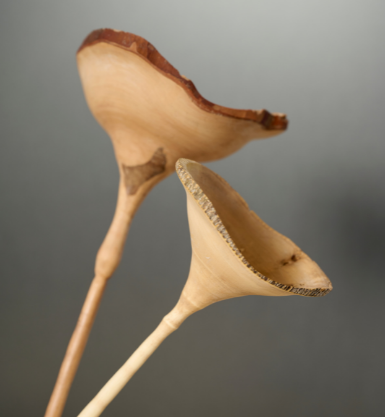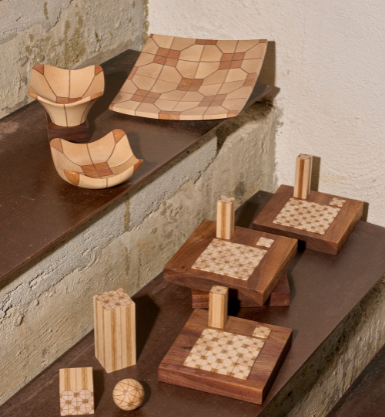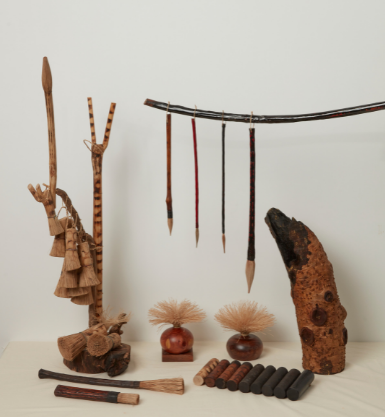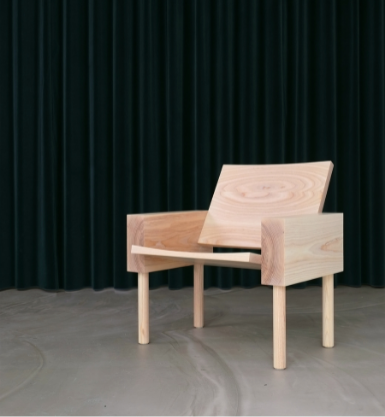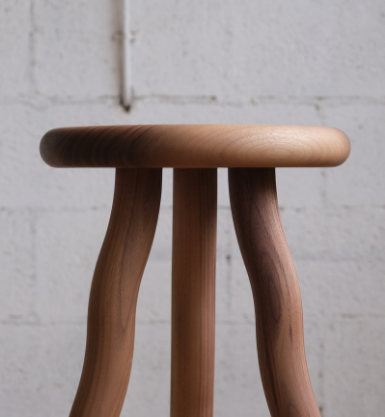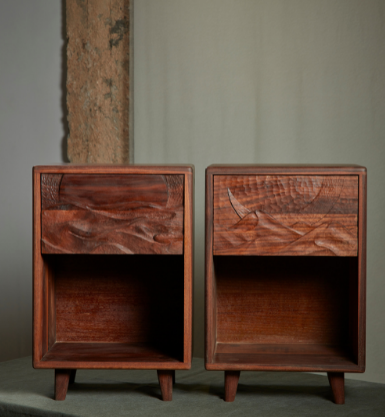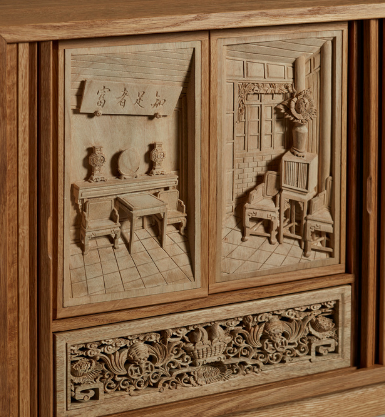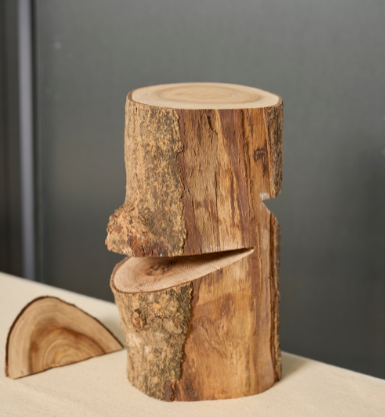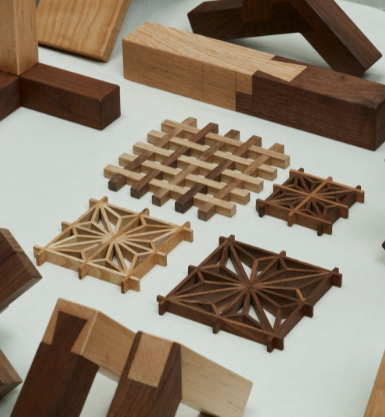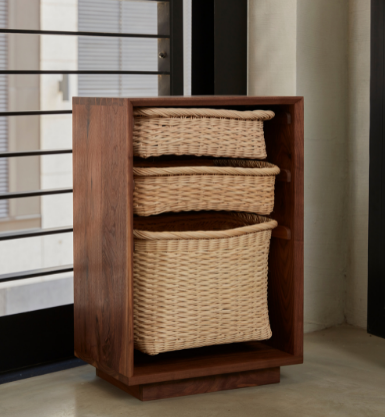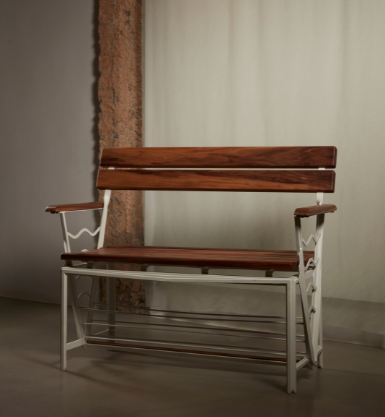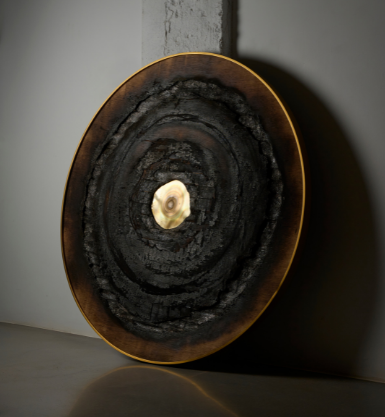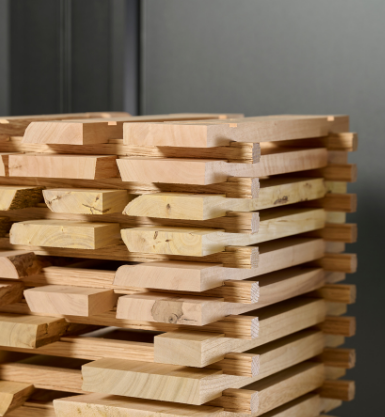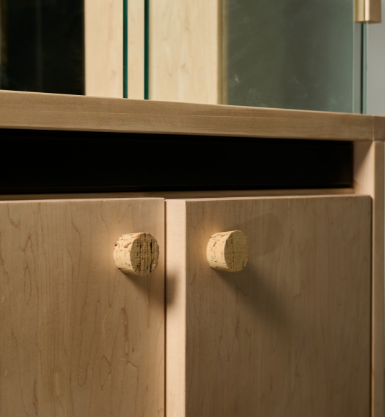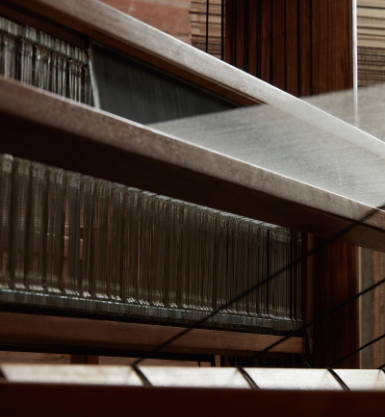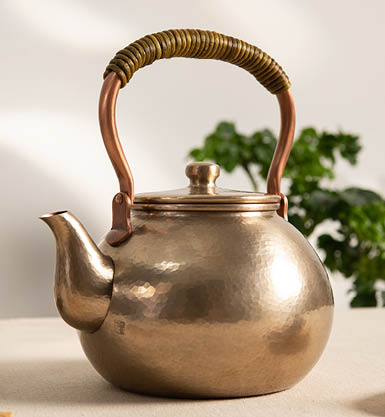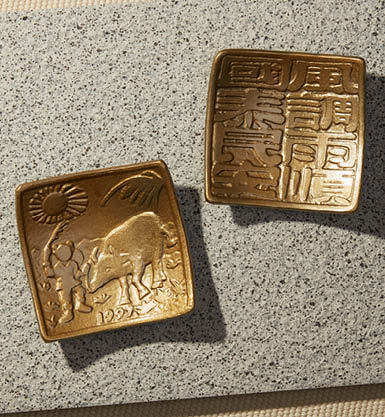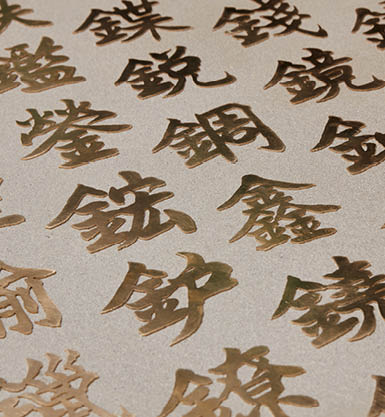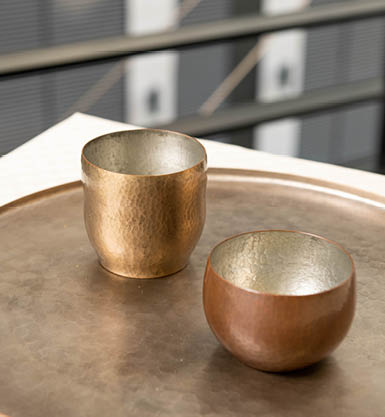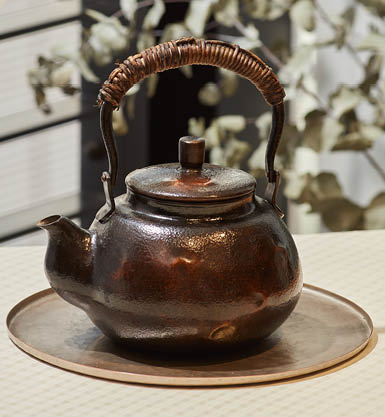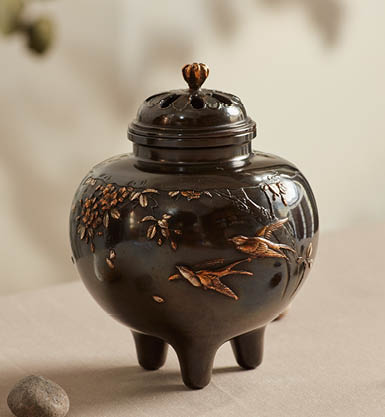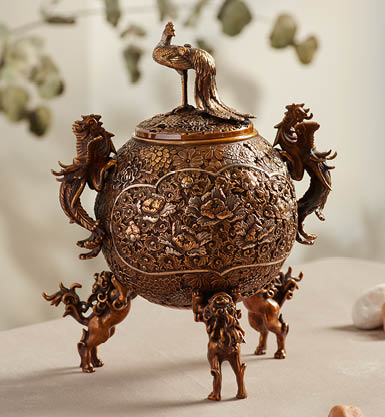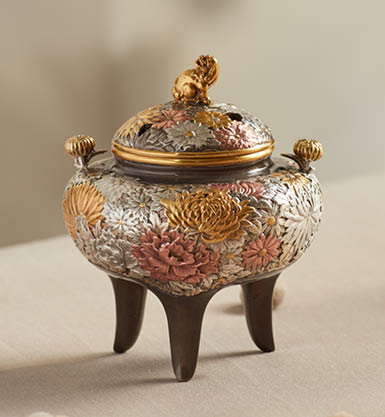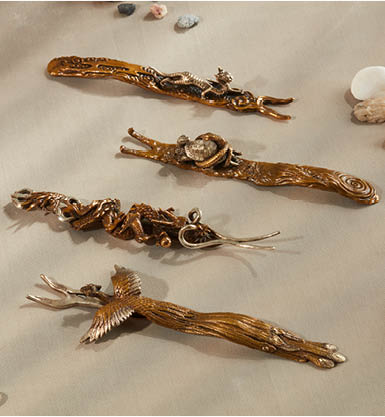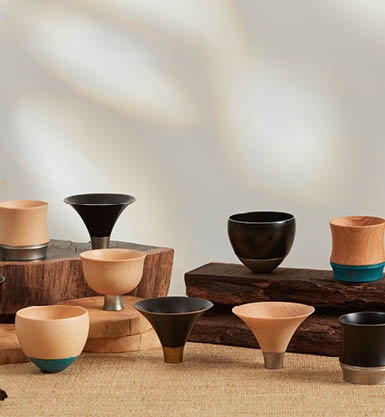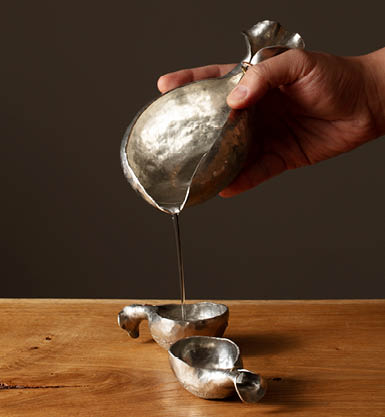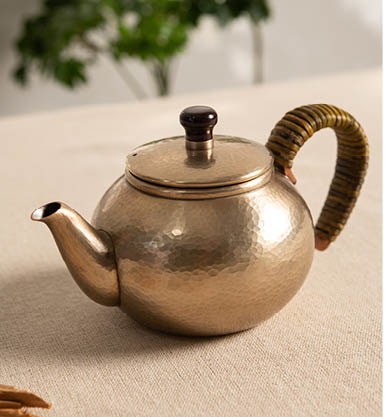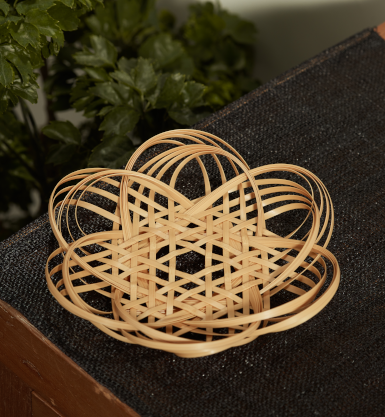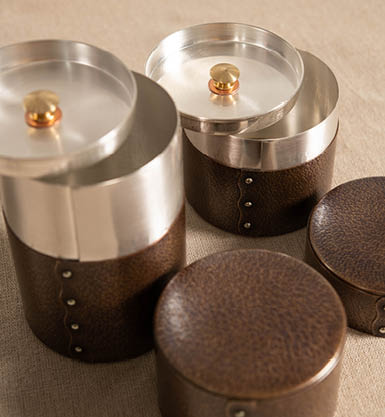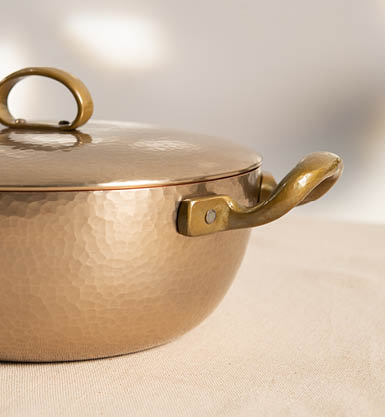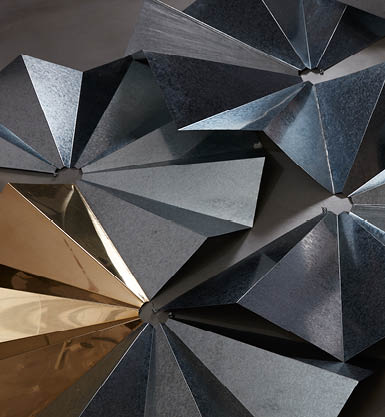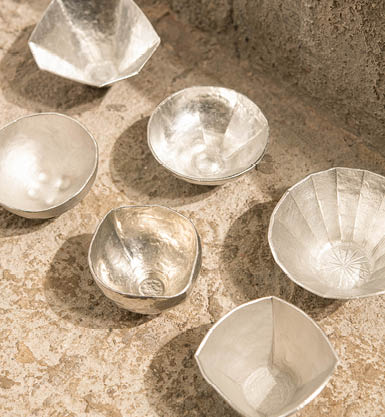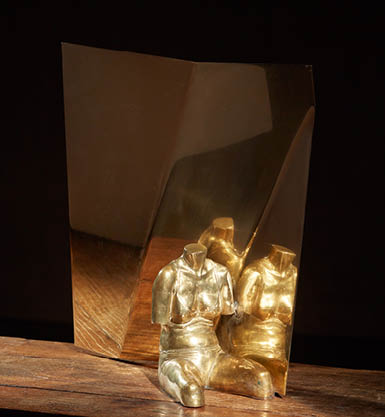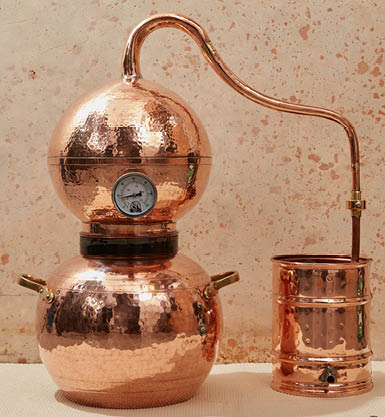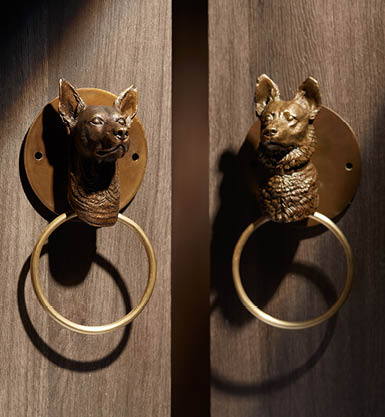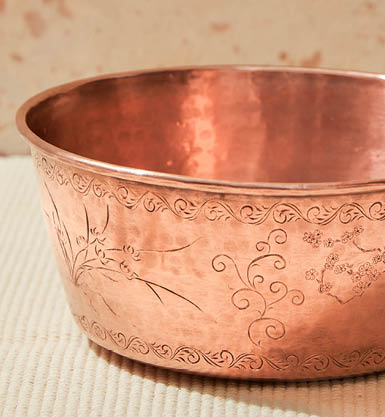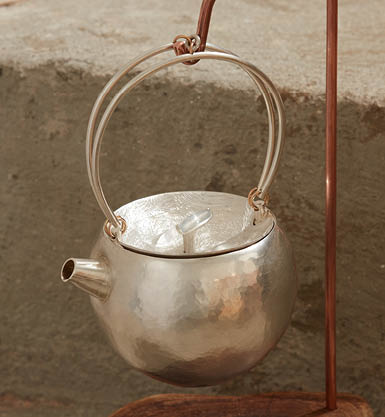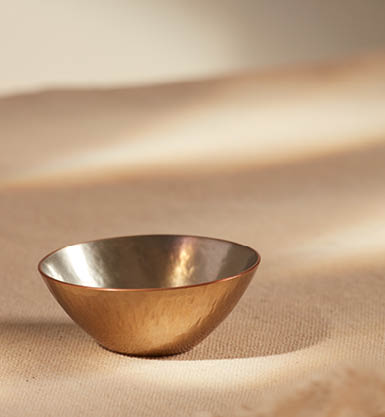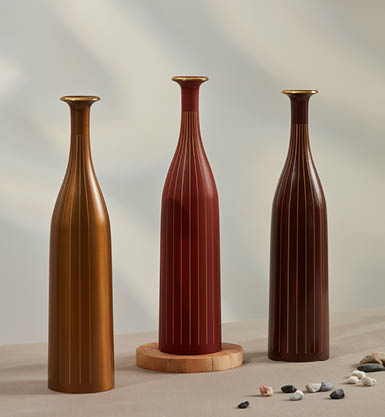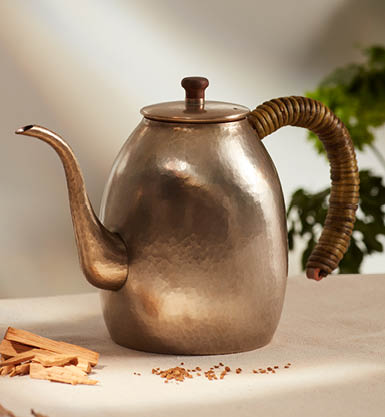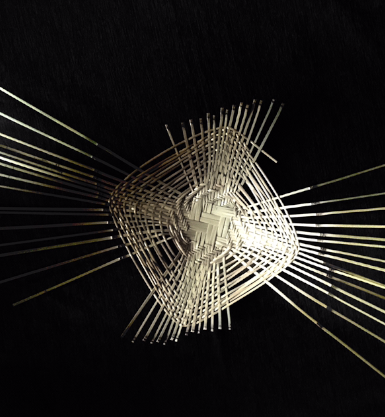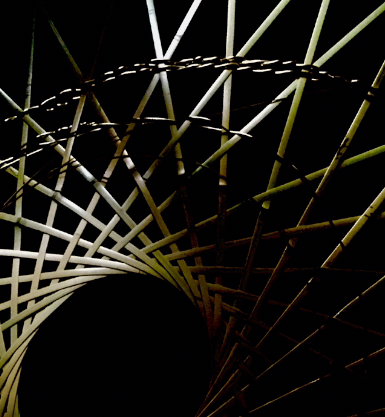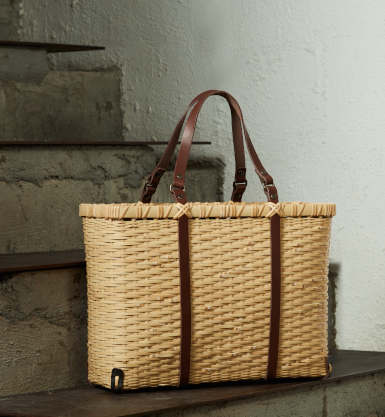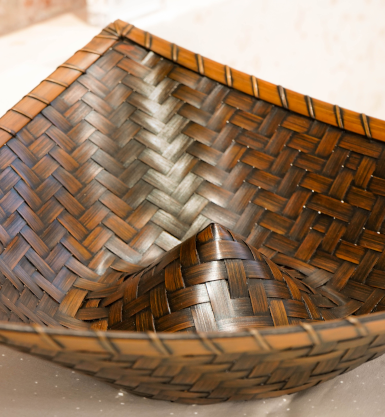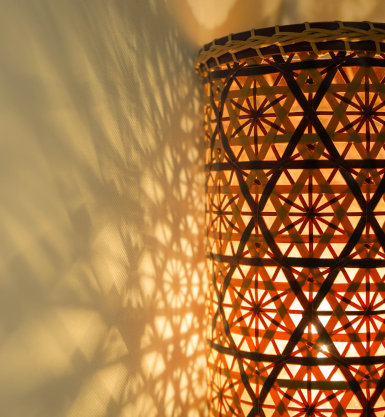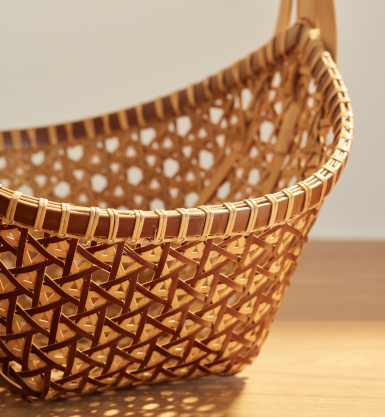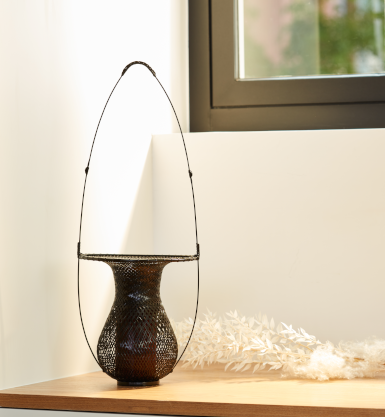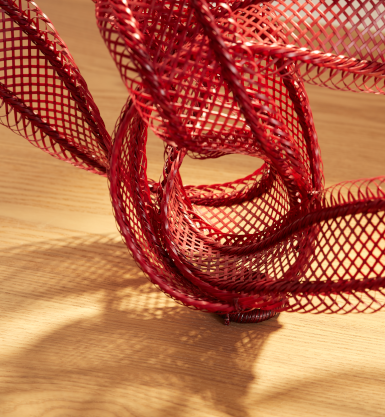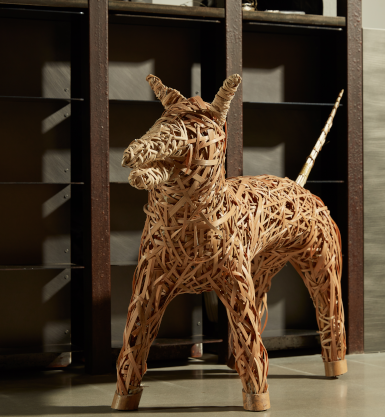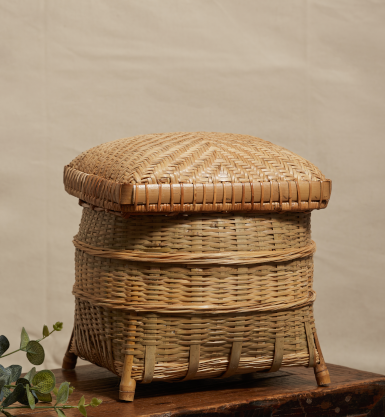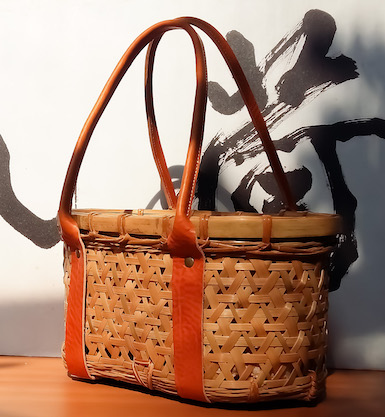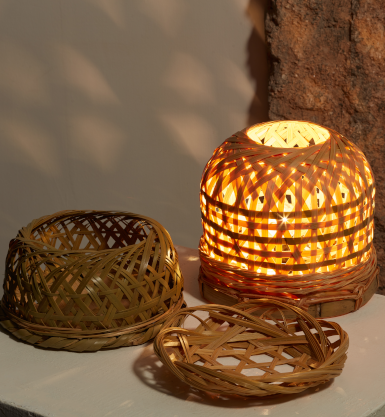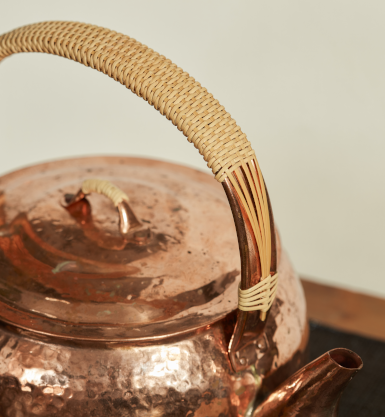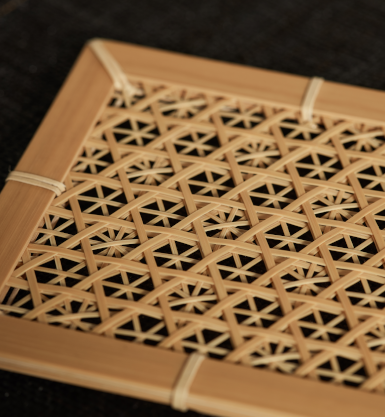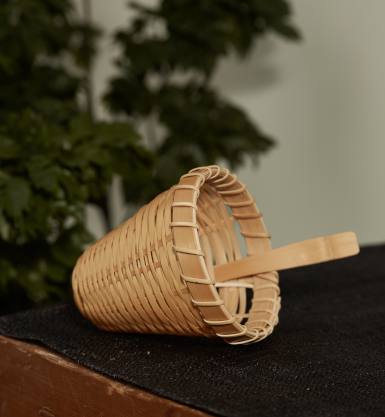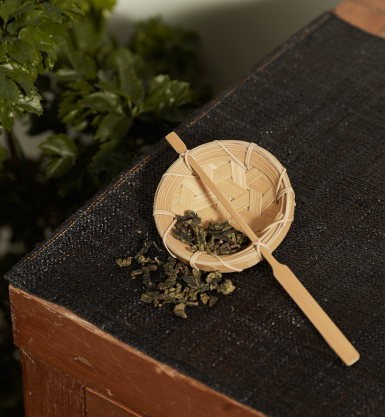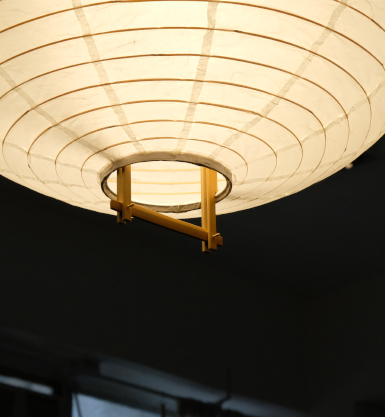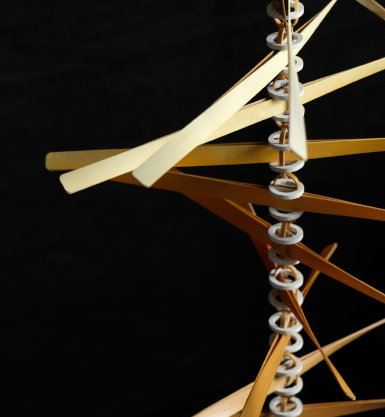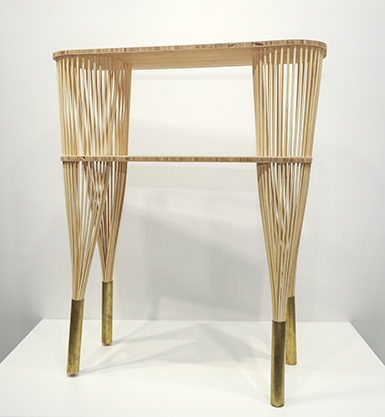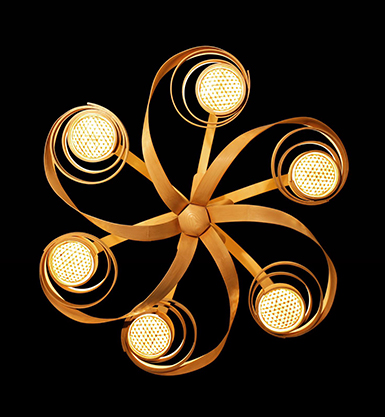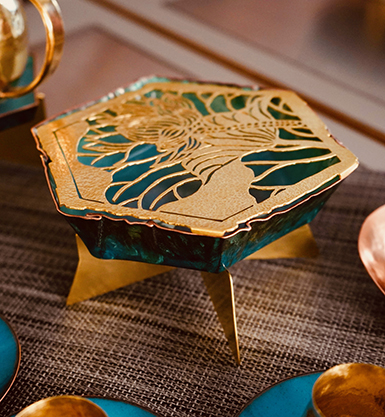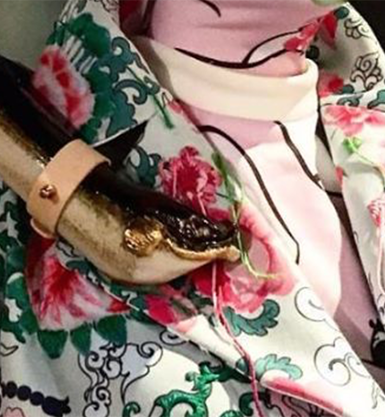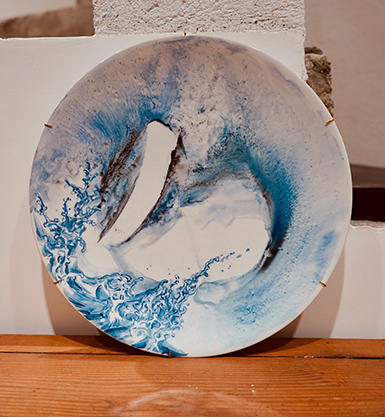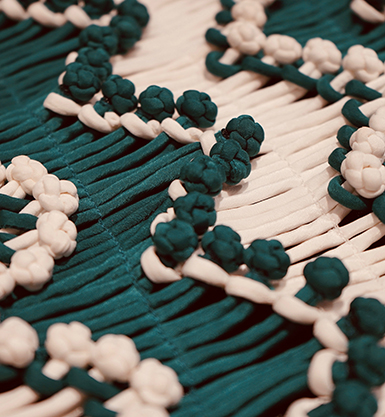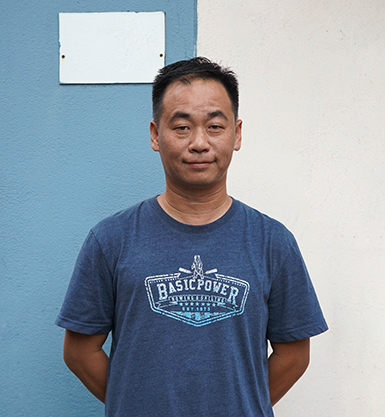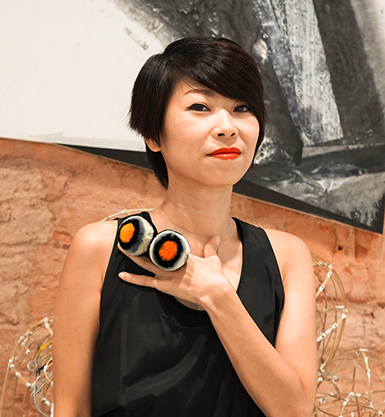Reborn Merman
The work is comprised of two components: a Lion Head and a Fish Tail composed of six modular pieces. Both making use of the traditional bamboo crafting and papier-mâché technique of “binding, paper-mounting, painting, assembling”, the Lion Head is handcrafted by Cheung Foon using the traditional bamboo crafting and papier-mâché technique, while Jinno’s Fish Tail transformed the traditional craft into a conceptual idea, using bamboo crafting as a framework, and injecting contemporary elements of water marbling and hand painting into the papier-mâché. The final work is a manifestation of how the traditional bamboo craft, which is on the verge of disappearing, is being “re-written” with the flow of ink, and is revitalized and perpetuated through the creative and innovative use of the technique. The modular Fish Tail can be used as independent pieces as decorative lighting or wearable fashion pieces.
Story of the Traditional Craft
Cheung Foon’s bamboo framed lion head possesses the distinguishing feature of the Hong Kong-style Southern China Lion.
Lion has long been regarded as “The King of All Animals”, and is the most commonly seen auspicious beast in the Chinese culture. It embodies wisdom and strength, and is the symbol of bravery, royalty and protection.
Lion dance is a traditional dance form in Chinese culture and other Asian regions. The performer wears a lion costume and imitates its movements, which is believed to bring good luck. Lion dance normally takes place during Chinese New Year and other traditional Chinese cultural and religious festivities, as well as on important occasions, such as business inaugural ceremonies, special celebrations and weddings. Before the commencement of the lion dance, there will be a “lion-awakening ritual”, and the ceremony is conducted by the officiating guest, who will dot the lion’s eyes with cinnabar, which symbolizes life-giving.
Chinese lion dance is mainly divided into two types: Southern and Northern lion. Northern lions are mainly smaller and lighter, and emphasizes more on the flexibility during the dance. This type of dance is more popular in the north of Yangtze River. Whereas Southern lion stresses more on the imposing demeanor of the lion itself, and is more popular in South China. A hybrid form emerged in recent years combining the two lion dances, which mainly adopted the physical style of the Southern lion, and the style of dance of the Northern lion.
Traditional lion dance is often confused with dragon dance. The simple distinction is that lion dance is normally conducted by two dancers, and has a tail, while dragon dance is longer, and is manipulated by more people using bamboo poles. The basic dance steps of Chinese lion dance can find its reference in Chinese martial arts.
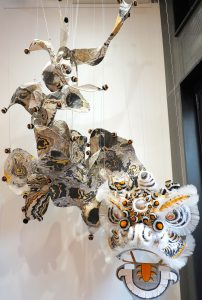
Making Process
It usually takes 13 to 15 working days to complete a Foshan lion and the materials include bamboo, sandpaper, paste, iron wire, etc. The processes involved in traditional bamboo crafting and papier-mâché technique can be broadly classified into “binding, paper-mounting, painting, assembling”. The skeleton of the model is first created by binding bamboo strips with paper wraps. Next, tissue paper or satin is applied onto the skeleton. After the model is made, colour will be painted onto the model and patterns will be added. Decorations such as felt balls and tassels are assembled to complete the model. Styling, precise proportions, colour schemes, as well as sharp and delicate paint work are all critical in craft making process.
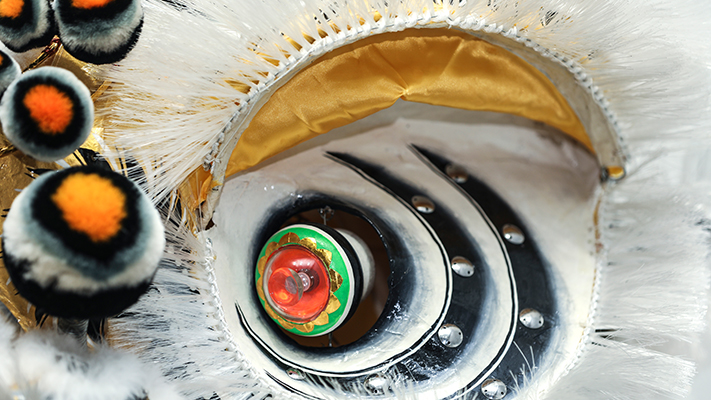 |
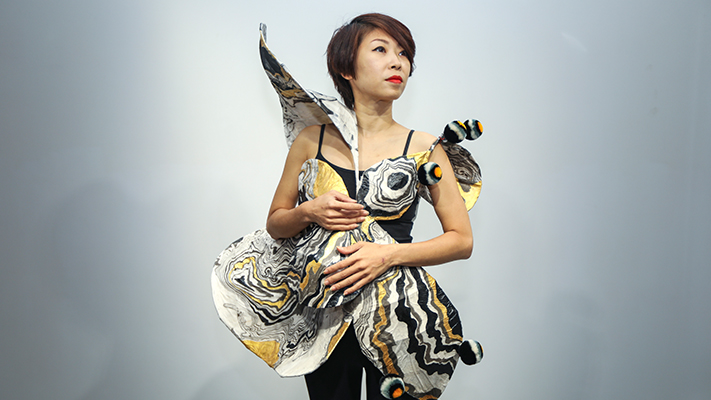 |
Artworks from same series
OTHER WORKS FROM EXHIBITION
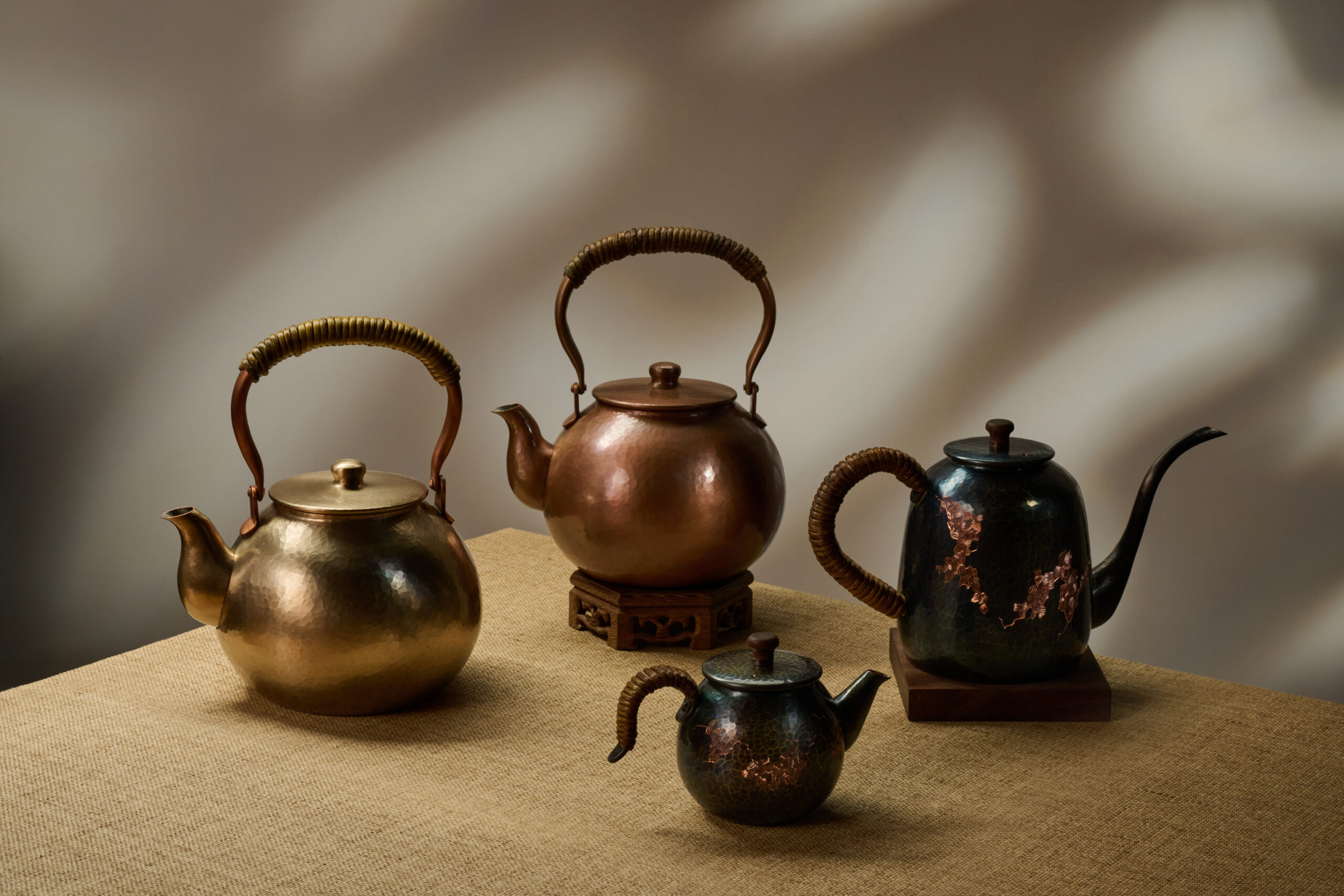
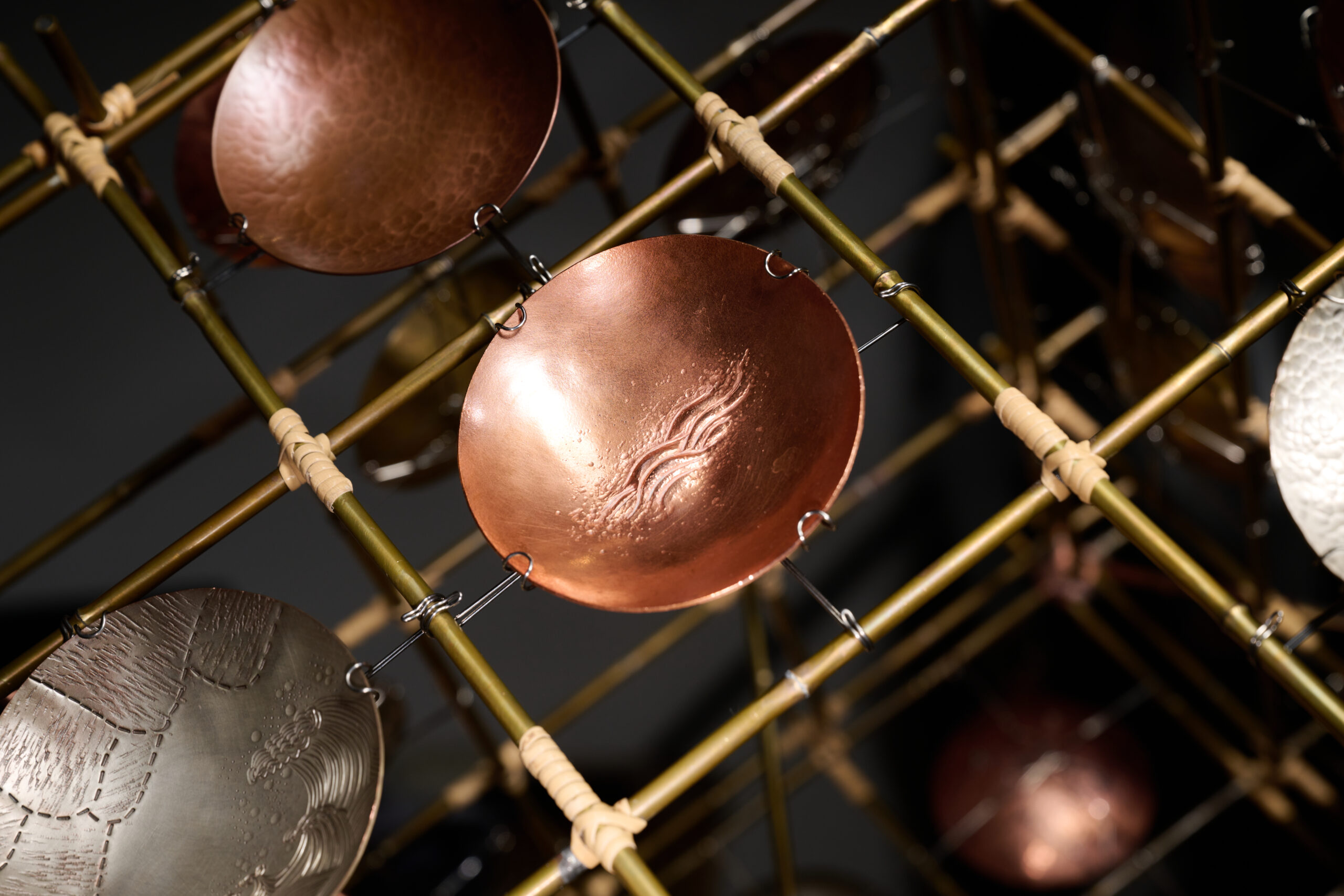
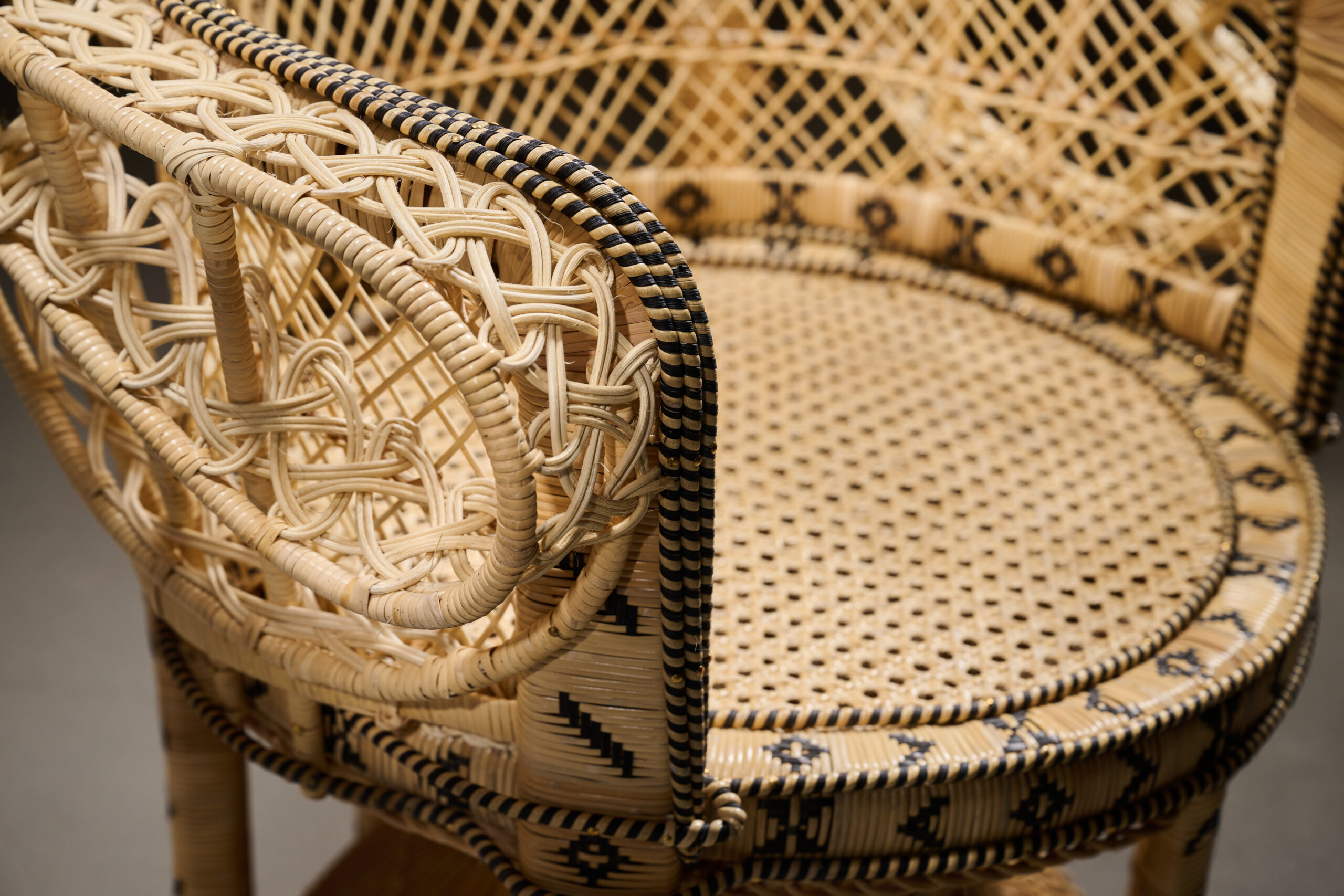
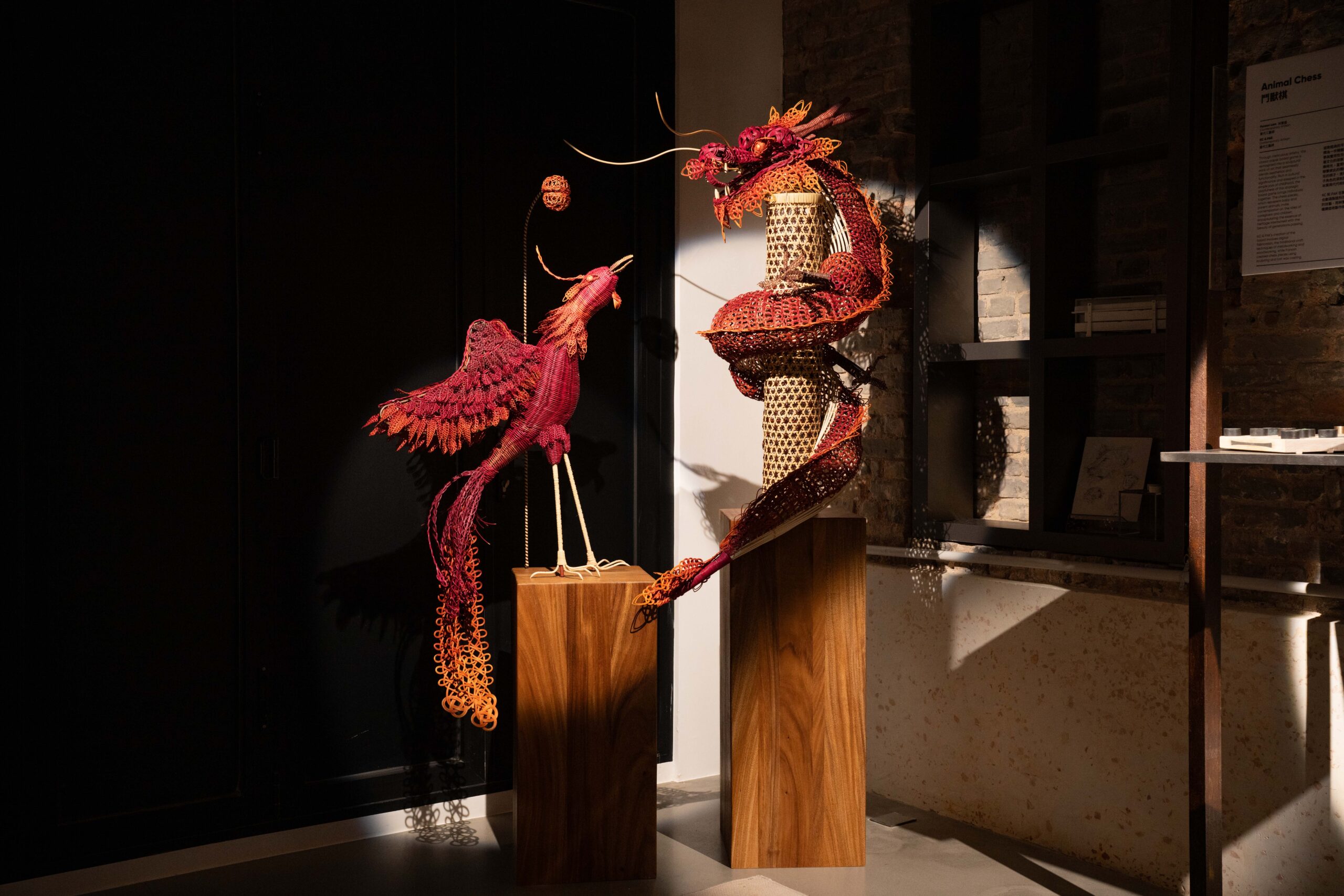
Auspicious Horizons
Yue Kee Rattan Factory & Ahung Masikadd & Barnard Chan & Cecilia Lai


